Science & Tech
Why the Tesla Powerwall Technology Will Change Solar Power – FOREVER!
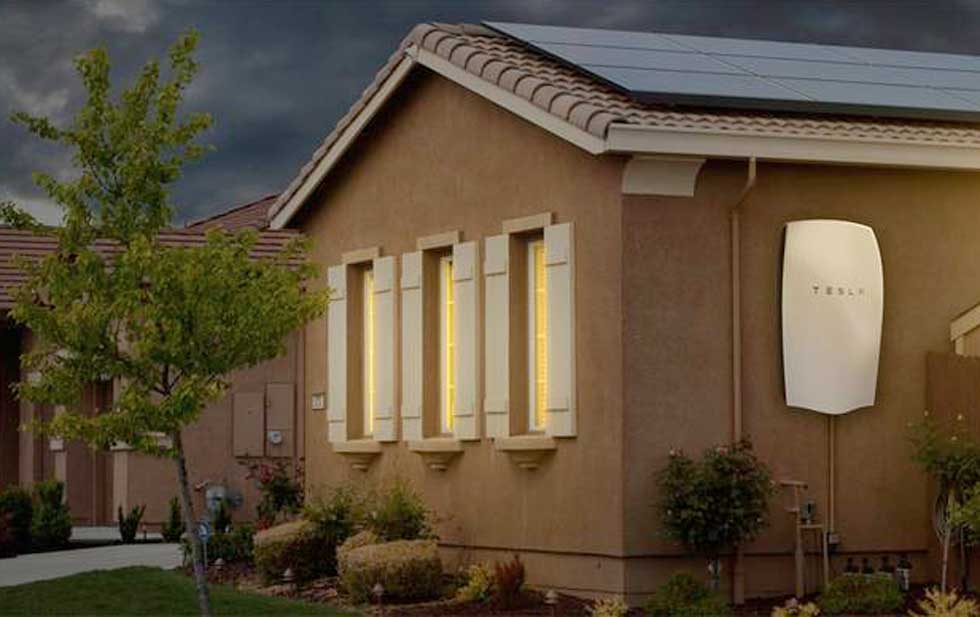
We’re always striving to move away from coal and oil to power our world, but Tesla Motors is in a full on sprint, and they want to share their dream with the world. We have all heard the news about the Tesla Powerwall but without a knowledge of batteries it is a bit hard to understand why the breakthrough is so exciting. Let’s take a minute to break it down!
Solar has always been a bit of a pain to manage and set up, but Tesla’s new Powerwall changes all of it. The Powerwall is sleek and efficient while completely erasing the issues of current-generation solar power storage. Up until recently most solar battery back-ups were a string of 4-12 Lead-Acid car batteries to help bridge the gap between peak solar (When your panels get the best sun) and peak electrical demand, allowing you to light your house at night without scraping out the extra change to do so. Some have even upped the battery count to cut out their electrical bill completely.
Why The Old Options Just Don’t Cut it!
Using a bunch of car batteries for solar is a good option, however, it requires some dangerous maintenance and can cause serious damage to you and your environment.
Lead-acid batteries need to be kept full of electrolyte (Sulphuric Acid in Water) to keep the battery performing its best. Many go for “AGM” lead-acid batteries instead to reduce risk in maintenance, but these are much more expensive.
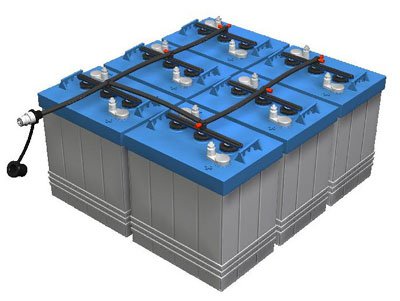
Via leadingedgepower.com
AGM stands for Absorbent Glass Mat. It’s there to soak up the acid solution and prevent it from physically spilling if knocked over.
Even past the maintenance issues, Lead-acid has drawbacks. They work well with solar only because they get the chance to charge and discharge throughout the day which is essential to the batteries life. Even a week with no charge on a lead-acid battery will dramatically reduce its charge. In the case of solar, this is wasted solar power.
Lead-acid loses its charge over time due to the internal electrolysis of the electrolyte (Electricity + H20 = Hydrogen and oxygen gas) and the ambient discharge of whatever material sits under it. Concrete and Metal will do this easily which is why it’s common practice to keep unused batteries on top of something like a wood shipping pallet. In your car’s case, it could lose capacity through the metal of the car, although the entire car is grounded back to the negative post of the battery making this effect go much slower. That plastic tray under there is actually to catch any acid that manages to escape from the battery, so it doesn’t corrode all over your engine bay. Regardless, your battery will absolutely die over time in a car that sits around without being ran.
The Tesla Powerwall Overcomes Major Issues
The Tesla Powerwall has none of these issues – It’s a bank of Lithium-Ion batteries. Not much different from the idea of a large water cooled phone charger, although owning a Powerwall solely to charge your phone is massive overkill. Or not, I won’t judge you.
Before I go into how this works I’d like to explain how reliable lithium-ion batteries are.
Lithium Ion ( Li-Io ) is built in a way where catastrophic failure results in excess heat and an inner seal busting open to safely vent any pressure that might have built up inside. Lithium Polymer, on the other hand, has a tendency to start fires when poked a bit too hard with something sharp.
A Youtuber by the name of AvE proved this using a hydraulic press.
Usually, Lithium Ion batteries come in prismatic (the flat removable battery in some phones) and Cylindrical, much like the AA battery would be shaped. These cylindrical lithium ion batteries are the most popular in the world. The 18650 (18mm wide, 650mm tall – about twice the size of a AA) is the standardized size. I can almost guarantee that this cell in its many makes and models is present in every mobile lithium-ion application, save for a very few super modern slim laptops. three good examples are lithium drill batteries, most every other laptop battery you’ll ever see, and (at the time of posting) all available lithium golf cart batteries.

via Tesla
Lithium solar battery backups don’t have the issues that a lead-acid backup would. Lithium Ion can sit fully charged for months on end with little to no loss of capacity and don’t require a minute of maintenance after it’s been installed. As for total capacity? Lithium Ion has the highest energy density (power it can hold in a specific size and weight) out of most other commercial energy storage systems available. This means that this Powerwall is much lighter and much more powerful than its solar-bank predecessors. Finer details of the Tesla Powerwall can be found on the Tesla website here.
The Commercial Powerpack!
Tesla also offers a variant of the Powerwall called the Powerpack , which is essentially a power-wall built to use the modules that they place inside of their vehicles. The main change of the “power-pack” is that it’s designed more as an industrial / commercial backup battery to help offset peak times and loads, which means it “shaves off” most of the electrical demand at times of the day where the company using it would otherwise be paying a good portion more. It has much less focus on the solar implementation, but it’s technical specifications show that it’s just as capable as the official powerwall for solar use.
Due to the fine-tuned supply/demand prices that today’s power companies implement, using Tesla’s Powerpack is an incredibly effective way to avoid up-ending the company budget on its power bills. They’re built to order and can be scaled up to a virtually limitless amount of stored energy, although they resemble the size of a refrigerator rather than something that hangs on the wall. The Powerpack uses the same modules as their cars, which means that those who want to start out small can slowly and easily expand their storage capacity over time.
It goes without saying that such high-powered battery backups are invaluable to industries that would need constant power, specifically the medical industry. Hospitals could utilize these backups in conjunction with generators as a “Plan C” for power outages, which could prove essential in saving countless lives in the rare scenarios where hospitals find themselves relying on backup power. Alternately, these are a big attraction to data centers around the world seeing as a power loss could end up with ludicrous amounts of money lost in damage from an outage.
Coincidentally, all of the batteries for Teslas cars and their Powerwall are large arrays of these 18650 lithium-ion batteries manufactured by Panasonic and shipped overseas to us, although plans for a Battery Manufacturing Plant in Sparks, Nevada will make all of Tesla’s products cheaper without cutting any performance – which could eventually dethrone Coal and Oil as the power production standard in the U.S. in favor for solar and wind – because now we can actually store the power that our green technology brings us.
A bright looking future indeed, but we’ll all be waiting awhile to see this possibility come to fruition. Whether or not it ever will is anyone’s guess, but optimism makes sense here. Mr. Musk is putting his money where his mouth is and he’s absolutely not slowing down for anything.
Written by Alexandre Sheets
News
South Park Creators Use ChatGPT To Co-Write Episode About AI

In a world where algorithms compose music, paint masterpieces, and even mimic human conversations, the line between human creativity and artificial intelligence grows blurrier by the day. But what happens when AI steps into one of television’s most irreverent, boundary-pushing realms? Enter South Park, a show that has long thrived on poking fun at the absurdities of modern life.
In a bold move, creators Trey Parker and Matt Stone turned to ChatGPT—yes, the same AI tool you might use to draft emails or brainstorm ideas—to co-write an episode. It’s a collaboration that raises a tantalizing question: can a machine ever match the razor-sharp wit and satire of one of the world’s most iconic shows? And, perhaps more importantly, what does this experiment say about the future of storytelling in a tech-driven age?

Why ChatGPT? The Perfect Tool for Satire
For a show like South Park, which has spent decades lampooning the absurdities of modern life, the decision to use ChatGPT as a co-writer was anything but arbitrary. Artificial intelligence, particularly tools like ChatGPT, has surged into the spotlight as one of the most transformative and divisive technologies of our era. These tools are no longer confined to niche applications; they are now used to write essays, compose music, and even assist with creative brainstorming. The rise of AI has sparked heated debates about the nature of creativity, originality, and what it truly means to be human in an increasingly automated world.
Trey Parker and Matt Stone, the masterminds behind South Park, recognized the satirical potential of this cultural moment. ChatGPT isn’t just an advanced algorithm; it’s a symbol of a society struggling to keep pace with rapid technological change. By inviting AI into their own creative process, they tapped into a broader cultural phenomenon, where people both marvel at AI’s capabilities and question its implications. This choice allowed the creators to address head-on the uneasy coexistence of human creativity and machine efficiency—while still delivering the irreverent humor the show is famous for.
Beyond its practical utility, the decision to collaborate with ChatGPT underscores South Park’s unique ability to adapt to the times. Just as the show has previously tackled the rise of social media, cancel culture, and political correctness, this episode serves as a critique not just of AI’s growing role in society, but also of our collective obsession with it. By using ChatGPT to co-write their episode, Parker and Stone blurred the line between satire and reality, crafting a story that holds up a mirror to our fears, fascinations, and the inevitable questions of authenticity in a tech-dominated future. It’s a move that cements South Park’s status as a cultural touchstone for navigating modern life’s most pressing—and often most ridiculous—trends.
Inside the Episode: A Satirical Take on AI
The episode in question dives headfirst into the world of artificial intelligence, blending South Park’s signature humor with a sharp critique of how AI tools like ChatGPT are reshaping our interactions and decision-making. The episode was “written by Trey Parker and ChatGPT,” showcasing a unique partnership that brought AI into the heart of its satirical storytelling. In true South Park fashion, the storyline doesn’t shy away from pushing boundaries, using comedy as a lens to examine the absurdity and ethical dilemmas surrounding the increasing reliance on AI in everyday life.
At the heart of the episode lies a storyline involving Stan Marsh, who cleverly uses ChatGPT to compose text messages that help him navigate relationships. What starts as a seemingly harmless hack soon spirals into a hilarious exploration of AI’s unintended consequences. The plot unfolds in a way that is both comically exaggerated and surprisingly reflective of real-world concerns. How much of our communication is authentic when we outsource it to machines? Can AI help us build better connections, or does it merely serve as a shortcut that undermines genuine human interaction? These are the kinds of questions the episode subtly raises, all while delivering punchlines that keep viewers laughing.

Behind the Scenes: How AI Shaped the Script
Behind the humor and sharp satire of the South Park episode lies a fascinating creative experiment: the integration of ChatGPT into the writing process. The creators, Trey Parker and Matt Stone, didn’t just use ChatGPT in isolation—they leaned on resources from their AI-focused studio, Deep Voodoo, which recently received $20 million in funding to develop “deep fake technology, cost-effective visual effects services, and original synthetic media projects.” This collaboration highlights the creators’ commitment to exploring the cutting edge of technology to enhance their storytelling.
ChatGPT’s role wasn’t just a gimmick; it was a deliberate choice to test the limits of AI as a creative partner. The tool was used to help generate dialogue and plot ideas, blending the AI’s output with the creators’ signature wit and storytelling style. The result was a script that felt distinctly South Park—irreverent, insightful, and brimming with absurdity—while also showcasing the unique quirks and limitations of AI-generated content. Parker and Stone reportedly found humor in the way ChatGPT would occasionally misinterpret tone or produce overly polished text, which they then adapted to fit the show’s chaotic and edgy voice.
What made the process particularly interesting was the balance between human oversight and AI contribution. Parker and Stone treated ChatGPT as an idea generator rather than an independent writer. While the AI could produce a flood of suggestions, it lacked the cultural awareness and comedic nuance that define South Park’s tone. The creators had to sift through its outputs, tweaking and shaping them to fit the show’s vision, ensuring the final product retained its sharp, satirical edge. This meticulous approach showcased how AI can augment creativity, but also emphasized the irreplaceable role of human insight in creating truly impactful content.
This collaboration also offered a glimpse into how AI might shape the future of storytelling. While ChatGPT was instrumental in generating ideas, the creators found themselves reflecting on its limitations—particularly its inability to grasp subtext or infuse content with emotional depth. The experiment demonstrated that while AI can accelerate certain aspects of the creative process, it works best as a tool in the hands of skilled creators. For Parker and Stone, this blending of AI’s efficiency and human intuition was key to making the episode both innovative and authentically South Park.
Redefining Creativity: Will AI Rewrite the Rules of Storytelling?
The collaboration between South Park’s creators and ChatGPT has sparked broader discussions about the future of creativity in a world increasingly influenced by artificial intelligence. Could this be the beginning of a new era in storytelling where machines play a significant role, or is it merely a passing trend, showcasing AI’s novelty rather than its depth? These questions are at the heart of the debate about AI’s place in creative industries.
One of the most compelling aspects of this experiment is the way it challenges the traditional concept of authorship. For centuries, storytelling has been considered an innately human endeavor, fueled by emotion, experience, and cultural nuance. AI, while undeniably efficient, operates differently—it processes vast amounts of data to generate content based on patterns rather than personal insight or inspiration. This raises the question: can AI truly create, or does it simply imitate? In the case of South Park, the balance between human ingenuity and machine output became critical. While ChatGPT contributed to the episode’s dialogue and ideas, Parker and Stone’s creative instincts ultimately shaped the material into something meaningful and entertaining.
The implications of AI-driven storytelling extend far beyond the realm of television. In industries ranging from advertising to filmmaking, AI is already being used to generate scripts, conceptualize campaigns, and even edit content. Proponents argue that these tools can streamline workflows, spark innovative ideas, and democratize creativity by making advanced resources accessible to more people. Critics, however, warn of the potential risks: the homogenization of content, the loss of authentic human voices, and the ethical concerns surrounding AI’s impact on employment in creative fields.
AI Meets Creativity: A Bold Step, Not a Replacement
South Park’s experiment with ChatGPT represents a pivotal moment in the intersection of technology and creativity. By blending AI-generated content with human wit and storytelling expertise, Trey Parker and Matt Stone didn’t just create a memorable episode—they sparked a larger conversation about what it means to be creative in a tech-driven world. The episode serves as a reflection of our fascination with AI, offering both humor and insight into its potential and limitations.
At its core, this experiment underscores a simple truth: while AI can enhance the creative process, it cannot replace the human touch. The ability to infuse stories with emotion, cultural context, and originality remains uniquely human, even as machines grow more sophisticated. What South Park achieved wasn’t just another episode—it was a bold step into the future of storytelling, one that challenges us to think critically about the role of technology in shaping the narratives of our lives.
As the lines between human and machine creativity continue to blur, one thing is clear: the art of storytelling is evolving, and experiments like this are just the beginning. Whether AI becomes a revolutionary tool or a passing curiosity will depend on how creators choose to engage with it. For now, South Park has shown that even in a world of algorithms, satire and humor are still best delivered with a distinctly human touch.
Inspirational
Inspired By Chinese Technology, Class 12 Madhya Pradesh Student Develops Human Carrying Drone

In the world of cutting-edge technology, innovation often comes from unexpected places. In Gwalior, Madhya Pradesh, a high school student is turning heads with a remarkable invention that has the potential to redefine personal mobility and aerial transport. Inspired by international advancements and driven by his own curiosity, this young creator has developed a drone that can do something truly extraordinary—carry a human passenger.
What makes this story even more captivating is not just the invention itself, but the challenges overcome and the ambitious dreams fueling it. With a humble beginning and grand aspirations, this creation is poised to inspire and innovate far beyond its starting point. Curious to know more about this groundbreaking achievement and the mind behind it?
The Birth of MLDT 01
In the evolving landscape of drone technology, the concept of human-carrying drones has transitioned from science fiction to tangible reality. Studies have demonstrated the feasibility of such drones, with prototypes capable of lifting significant weights. For instance, research published in the IEEE Xplore detailed a prototype designed to produce a static thrust of 140 kgf, sufficient to carry a person.
Against this backdrop of technological advancement, a remarkable story of innovation has emerged from Gwalior, Madhya Pradesh. Medhansh Trivedi, a Class 12 student at the Scindia School, embarked on an ambitious project to develop a human-carrying drone, drawing inspiration from Chinese drone technology. “I got the inspiration to make this drone after seeing the drones of China,” Medhansh shared, highlighting the global influence on his endeavor.
With a budget of approximately ₹3.5 lakh and a development period of three months, Medhansh’s creation, named MLDT 01, showcases his dedication and resourcefulness. The drone measures 1.8 meters in both length and width, featuring a compact design optimized for stability and performance. It is equipped with four motors commonly used in agricultural drones, providing a combined output of 45 horsepower. This configuration enables MLDT 01 to carry a person weighing up to 80 kilograms, reach speeds of 60 km/h, and sustain flight for up to six minutes.
Medhansh’s journey was not without challenges. Limited resources and the complexities of designing a human-carrying drone required perseverance and ingenuity. He credits his teacher, Manoj Mishra, for providing both technical assistance and motivation throughout the project. “My teacher Manoj Mishra has helped me a lot technically along with motivation to develop the drone,” Medhansh acknowledged, emphasizing the importance of mentorship in his success.

Image credits: Twitter @sauravyadav1133
Key Features and Performance
The MLDT 01 drone, developed by Class 12 student Medhansh Trivedi, showcases impressive technical specifications that highlight its potential in personal aerial transportation.
Technical Specifications:
- Dimensions: The drone measures 1.8 meters in both length and width, providing a stable platform for flight.
- Power Output: Equipped with four motors commonly used in agricultural drones, MLDT 01 boasts a combined power of approximately 45 horsepower, enabling it to lift significant weight.
- Payload Capacity: Designed to carry a person weighing up to 80 kilograms, making it suitable for personal transportation.
- Flight Duration and Speed: Capable of flying continuously for up to 6 minutes at a speed of 60 kilometers per hour, allowing for quick short-distance travel.
- Altitude Limitations: While theoretically able to reach altitudes up to 4 kilometers, current safety protocols restrict its operational height to 10 meters during test flights.
Safety Considerations:
Safety remains a paramount concern in the operation of human-carrying drones. The MLDT 01 is currently tested at a maximum height of 10 meters to mitigate risks during initial trials. Future iterations will likely incorporate advanced safety features, such as automated landing systems and enhanced structural integrity, to ensure passenger security.
Comparative Analysis:
In the broader context of drone technology, the MLDT 01 aligns with global advancements in personal aerial vehicles. For instance, the EHang 184, developed by the Chinese company EHang, is an autonomous aerial vehicle designed to carry a single passenger at speeds up to 100 km/h. While the EHang 184 offers longer flight times and higher speeds, the MLDT 01 represents a significant achievement in the Indian context, particularly given its development by a high school student with limited resources.
Recognition and Support
The innovative prowess of Medhansh Trivedi has garnered significant attention and commendation from prominent figures in India’s scientific and political arenas.
During the foundation day celebrations of Scindia School, Union Minister Jyotiraditya Scindia, who also serves as the school’s patron, alongside ISRO Chief S. Somanath, lauded Medhansh’s achievement. Their acknowledgment not only highlights the significance of Medhansh’s work but also underscores the potential impact of such innovations on India’s technological landscape.
A pivotal figure in Medhansh’s journey has been his teacher, Manoj Mishra, who provided both technical assistance and motivational support. Mishra observed, “With the aim of doing something different, he used to take information about new inventions.” This mentorship was instrumental in transforming Medhansh’s ambitious idea into a functioning prototype.
Medhansh’s accomplishment has resonated beyond academic circles, capturing the interest of local and national media. Publications have featured his story, emphasizing the blend of youthful innovation and practical application. Such coverage not only brings recognition to Medhansh but also inspires other young minds to pursue technological advancements.
Buoyed by the recognition and support, Medhansh is determined to advance his project further. He envisions transitioning the MLDT 01 into a hybrid model and developing drones for broader applications, including goods transportation and agricultural use. His ultimate goal is to establish an air taxi company and create affordable helicopters for public use. The encouragement from esteemed personalities and the media serves as a catalyst for these future endeavors.
Challenges and Vision for the Future
Embarking on the development of the MLDT 01 drone, Medhansh Trivedi encountered several challenges, from technical complexities to resource constraints. The project demanded a significant investment of time and finances, with approximately ₹3.5 lakh allocated over three months. Medhansh acknowledges the pivotal role of his mentor, Manoj Mishra, stating, “My teacher Manoj Mishra has helped me a lot technically along with motivation to develop the drone.”
Looking ahead, Medhansh envisions expanding the drone’s capabilities by transitioning to a hybrid model, aiming to enhance flight duration and efficiency. He articulates his broader aspirations: “In future, I will make drones useful for common people which can be used to carry goods, transport a person to another place and in agriculture.”
Medhansh’s ambition extends to establishing an air taxi company and developing affordable helicopters, reflecting his commitment to revolutionizing personal transportation and logistics. His journey underscores the importance of innovation, mentorship, and resilience in overcoming obstacles to achieve technological advancements.
https://www.youtube.com/watch?v=LV18yyRZ5C
A Skyward Vision: Pioneering the Future of Drones
Medhansh Trivedi’s innovative journey with the MLDT 01 human-carrying drone is a beacon of creativity, resilience, and determination. From overcoming technical challenges to capturing the attention of prominent figures and media, his story is an inspiring reminder of what young minds can achieve with the right guidance and support.
IThis drone represents not only an individual’s achievement but also the possibilities for aerial technology to transform industries like transportation, agriculture, and logistics. With ambitions of creating hybrid drones, air taxis, and affordable helicopters, Medhansh is poised to push the boundaries of innovation even further.
As Medhansh continues to refine his creation and pursue his dreams, his story serves as a testament to the transformative power of ingenuity, mentorship, and a forward-thinking vision. The MLDT 01 is just the beginning—a launching point for a future where personal aerial transport becomes accessible to all.
News
Scientists Have Discovered a Second Hidden Core Inside Earth:

Imagine trying to solve a puzzle buried 3,000 miles beneath your feet, hidden within layers of molten rock and intense pressure. For centuries, scientists have believed Earth’s inner core—a dense, solid ball of iron and nickel—was the unwavering heart of our planet. But what if that core isn’t as solid as we thought? Recent discoveries suggest it might be more like a molten slurry, a mushy blend that defies long-held assumptions.
Could this revelation help unlock the secrets of Earth’s magnetic field, or even rewrite our understanding of how our planet functions? With seismic waves offering only glimpses into this mysterious realm, the truth about the Earth’s core is stranger—and squishier—than anyone could have imagined.
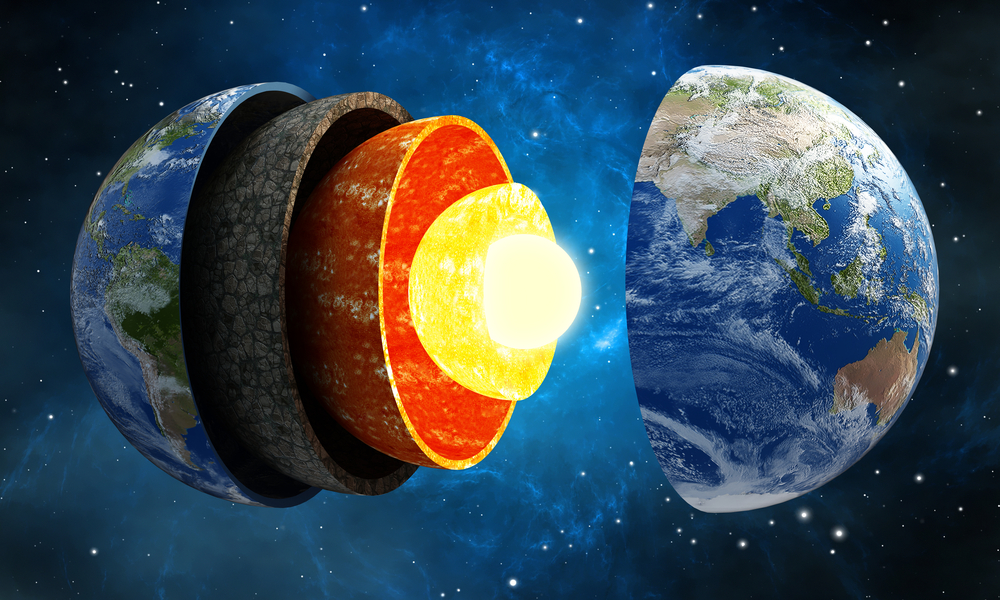
What is the Inner Core?
The Earth’s inner core has long been thought of as a dense, unyielding sphere of iron and nickel, buried over 3,000 miles beneath the surface. Measuring about 760 miles in radius, it’s often likened to a planet within a planet, surrounded by the liquid outer core. This inner core plays a critical role in sustaining Earth’s magnetic field, which shields us from harmful solar radiation and helps maintain the delicate balance of life on the surface.
Historically, scientists have portrayed the inner core as a solid, unwavering structure, contrasting with the turbulent liquid layer surrounding it. Its composition and behavior have been key to understanding the geodynamics of our planet. However, the reality may not be as straightforward as textbooks suggest. Recent findings challenge the long-standing belief in the core’s solidity, revealing a far more dynamic and complex nature.
The core is not just a static feature of the Earth but a living, evolving system. The interplay between its solid and liquid layers has profound implications for how the planet functions—implications we are only beginning to unravel. Could this newly uncovered “mushy” nature explain some of the enduring mysteries about Earth’s magnetic field? Scientists are now peering deeper into this hidden realm to uncover the answers.
A New Discovery: The ‘Mushy’ Core
For decades, the Earth’s inner core has been described as solid—its structure a dense, metallic core compressed under unimaginable pressure. However, groundbreaking research is challenging this view. Scientists now suggest that parts of the inner core may not be as rigid as previously believed. Instead, these areas could have a “mushy” consistency, resembling a mix of solid and liquid phases rather than a perfectly solid sphere.
This revelation emerged from seismic wave studies, which have long served as the primary tool for exploring the Earth’s depths. These waves, generated by earthquakes, travel at varying speeds depending on the material they pass through. Recent findings revealed unexpected variations in wave behavior as they moved through the inner core, suggesting the presence of a less uniform, partially fluid structure. As the researchers put it, their observations hint at a “complex internal structure” within the core.
What makes this discovery particularly intriguing is its implications for the Earth’s magnetic field. The magnetic field is generated by the interaction between the molten outer core and the supposedly solid inner core. If parts of the inner core are mushy or semi-liquid, this dynamic could influence the behavior of the magnetic field in ways we don’t yet fully understand. It raises questions about how the core has evolved over billions of years and what role this variability might play in the future stability of the magnetic field.
This shift in understanding isn’t just a minor adjustment to geological models. It’s a paradigm shift that forces scientists to rethink how the core interacts with the rest of the planet. The very foundation of how we understand Earth’s inner workings is being reexamined, pushing the boundaries of knowledge about what lies beneath our feet.

How Scientists Made This Discovery
The Earth’s core remains an enigma hidden beneath layers of rock and molten metal, making direct exploration impossible. Scientists instead rely on seismic waves—vibrations produced by earthquakes—to unravel its secrets. These waves change speed and direction as they travel through different materials, offering glimpses into the planet’s interior structure.
Recent seismic studies revealed unexpected variations in wave behavior as they passed through the inner core. These variations challenged the long-held belief that the core is a perfectly solid sphere of iron and nickel. Jessica Irving, a geophysicist at the University of Bristol, succinctly captured the excitement of this discovery: “The more that we look at it, the more we realize it’s not one boring blob of iron.” Instead, parts of the core appear to have a “mushy” texture—a blend of solid and liquid phases.
Seismic waves are particularly revealing because of their sensitivity to changes in density and composition. By analyzing wave speeds and their interactions with the core’s material, scientists identified regions where the core’s consistency didn’t match traditional expectations. According to Rhett Butler, a geophysicist at the University of Hawai‘i, these findings highlight the incredible complexity of the Earth’s interior: “We’re finding a whole new hidden world.”
This discovery underscores the power of seismic technology and the ingenuity of researchers who interpret these faint signals from deep within the Earth. By decoding these vibrations, scientists are uncovering a dynamic, multilayered core that challenges our understanding of planetary processes. These advancements also open the door to new questions about the role this variability might play in Earth’s magnetic field and its evolution over billions of years.
Implications of a ‘Mushy’ Core
The discovery of a mushy, partially liquid inner core isn’t just a scientific curiosity—it has profound implications for understanding the Earth’s magnetic field and its stability. The inner core, long thought to be a solid iron-nickel sphere, interacts with the outer core’s swirling molten metal to generate the magnetic field that protects the planet from harmful solar radiation. But what happens when parts of that supposedly solid core are revealed to be less stable?
According to scientists, the newfound variability within the inner core could influence the magnetic field’s behavior in ways we are only beginning to comprehend. “Having this mosaic of regions with different compositions, different phases, and different properties is just a natural consequence of the solidification process,” Jessica Irving explained. These irregularities may help scientists understand fluctuations in the magnetic field over time, including its periodic weakening and strengthening.
The discovery also raises questions about the evolution of the Earth’s core and its future. If the inner core is not entirely solid, how might this affect its cooling process? Could it alter the timeline for when the core will eventually freeze entirely, as some models predict? “The Earth’s core is not just a static lump of iron,” emphasized Rhett Butler. “It is dynamic and evolving, with layers interacting in ways we are only starting to appreciate.”
Moreover, this finding reshapes how scientists approach the study of Earth’s inner workings. It suggests that the core is more complex and variable than previously assumed, which could have ripple effects on how we model planetary processes, from plate tectonics to the magnetic field. These revelations are a reminder of just how much remains unknown about the world beneath our feet—and how every discovery brings us closer to unlocking Earth’s deepest mysteries.
What’s Next for Core Research?
The revelation of a mushy inner core has opened new doors for scientific inquiry, sparking questions about Earth’s most inaccessible layer. With seismic wave studies revealing complexities previously thought impossible, researchers are now focusing on refining their tools and techniques to gain even deeper insights. “Seismology is the key to peering into the Earth’s hidden layers,” said Jessica Irving, underscoring the importance of continued advancements in this field.
One key area of future research involves understanding how the inner core’s variability impacts Earth’s magnetic field. This dynamic shield is essential for protecting the planet from solar winds and cosmic radiation, yet its fluctuations remain poorly understood. Could the mushy regions of the core play a role in these magnetic anomalies? “We’re still piecing together the puzzle,” noted Rhett Butler, emphasizing the need for further exploration of the interplay between the inner and outer cores.
Additionally, scientists are exploring whether this new understanding of Earth’s core could have implications beyond our planet. By comparing Earth’s inner core to those of other celestial bodies, researchers may uncover universal principles about planetary formation and evolution. “Every new discovery here on Earth gives us a lens to look outward and understand other worlds,” Butler added.
Technological advancements will be crucial in this endeavor. From more sensitive seismometers to sophisticated computer models that simulate core dynamics, these tools will allow scientists to dive even deeper into the planet’s secrets. As the mysteries of the core continue to unravel, one thing is clear: the Earth’s heart is far more dynamic and intricate than anyone ever imagined. Each step forward not only reshapes our understanding of the ground beneath us but also redefines our place in the cosmos.
Revisiting the Heart of the Earth
The discovery of a mushy, partially liquid inner core challenges long-held assumptions about Earth’s most mysterious layer. Far from being a “boring blob of iron,” as Jessica Irving described it, the inner core is a dynamic, evolving structure that holds the key to understanding some of the planet’s most critical processes. From its role in generating the magnetic field to its influence on Earth’s long-term stability, the inner core is a reminder of just how little we truly know about the world beneath our feet.
This revelation not only reshapes our understanding of Earth’s interior but also opens new possibilities for exploring the hidden mechanics of planetary systems. With seismic waves as our primary tool, scientists are steadily unraveling the complex interplay between the inner and outer cores, revealing a planet that is anything but static.
News
We’re Going Back To The Moon! Meet The Crew Of Artemis II
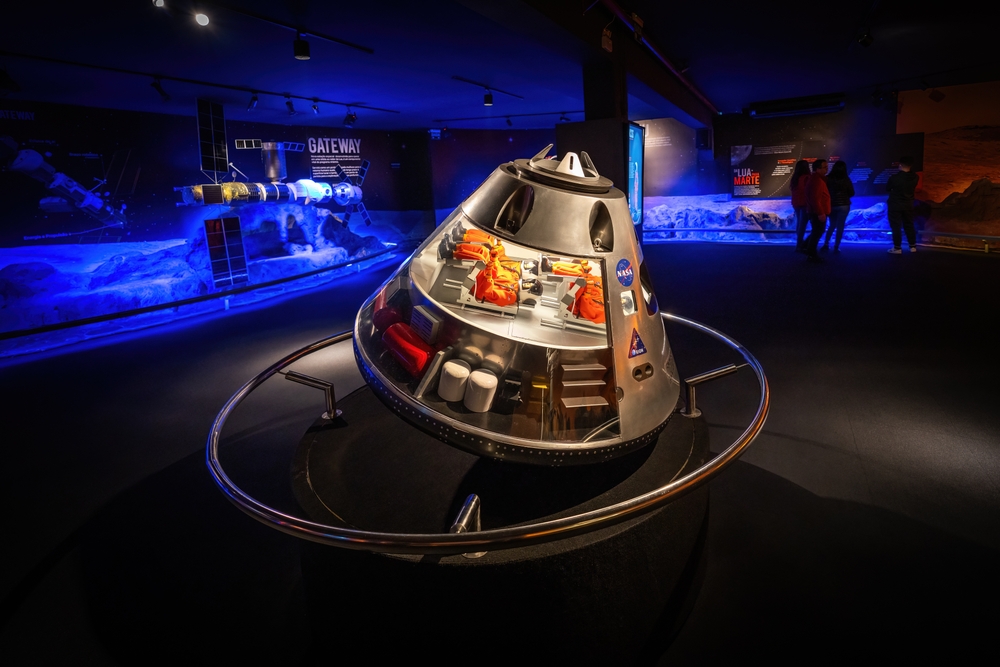
For over half a century, the Moon has loomed in the night sky as both a symbol of human triumph and an unfulfilled promise. The Apollo missions left their footprints, but also unanswered questions—about what lies beyond, and what humanity’s next great leap might be. Now, with NASA’s Artemis program, we’re not just revisiting the Moon; we’re redefining our relationship with it.
Why go back? This time, it’s not just about planting flags or taking photographs. It’s about laying the foundation for humanity’s future in space. With Artemis II, a diverse team of astronauts is gearing up to embark on a journey that will push the boundaries of exploration and technology, paving the way for missions to Mars and beyond.

What Is Artemis II?
Artemis II represents the next pivotal step in humanity’s journey to explore deep space, serving as the first crewed mission in NASA’s Artemis program. Unlike the Apollo missions that preceded it, Artemis isn’t just about returning to the Moon—it’s about preparing for the future. This mission will orbit the Moon, testing critical systems and gathering essential data to ensure the safety and success of future lunar landings and even missions to Mars.
The spacecraft at the heart of Artemis II is the Orion capsule, powered by NASA’s Space Launch System (SLS), the most powerful rocket ever built. Together, they will carry the crew on a 10-day mission around the Moon, reaching a distance of over 230,000 miles from Earth. NASA officials describe it as “the next milestone in humanity’s quest to push farther into the solar system.”
According to NASA, Artemis II will provide an opportunity to “demonstrate key capabilities and operations needed for humans to live and work on another world.” It’s not just a technical test—it’s a statement of intent. As NASA Administrator Bill Nelson put it: “This is humanity’s next great chapter of exploration. Artemis II will help us chart a path to the Moon that is more inclusive, innovative, and ambitious than ever before.”
The Artemis program is also groundbreaking in its inclusivity, aiming to land the first woman and the first person of color on the lunar surface. But before that can happen, Artemis II must ensure that everything is ready for Artemis III to safely achieve this historic milestone.
With technology that surpasses anything used during the Apollo missions and a clear vision for sustainable lunar exploration, Artemis II is setting the stage for a future where humanity can call the Moon more than just a distant neighbor—it could become a stepping stone to the stars.
Meet the Crew of Artemis II
At the heart of Artemis II lies its crew—four astronauts selected to represent the pinnacle of human achievement and the collaborative spirit of space exploration. Each of them brings a wealth of experience, skills, and a unique perspective to this historic mission.
Reid Wiseman (Commander)
Leading the mission is Reid Wiseman, a veteran astronaut with over 165 days in space during a previous expedition to the International Space Station (ISS). As Commander of Artemis II, Wiseman will oversee the mission’s operations, ensuring its success. Known for his leadership and dedication, Wiseman has said, “We are going to the Moon as one team, one crew, and one incredible global effort.”
Victor Glover (Pilot)
Making history as the first person of color to travel to the Moon, Victor Glover serves as the pilot of Artemis II. Glover previously spent 168 days aboard the ISS and contributed to multiple spacewalks. On his role in the mission, Glover remarked, “Representation matters. This mission is not just about where we’re going but who we’re taking along on this journey into the future.” His inclusion underscores NASA’s commitment to diversity and equity in space exploration.
Christina Koch (Mission Specialist)
Christina Koch is no stranger to breaking barriers. She holds the record for the longest single spaceflight by a woman, spending 328 days in orbit during her time aboard the ISS. As a mission specialist, Koch will bring her expertise in engineering and space operations to Artemis II. “It is an honor to be part of a mission that paves the way for humanity’s next steps on the Moon and beyond,” Koch said about her historic selection.
Jeremy Hansen (Mission Specialist)
Representing the Canadian Space Agency (CSA), Jeremy Hansen becomes the first Canadian astronaut to venture beyond low Earth orbit. His inclusion highlights the international collaboration fueling the Artemis program. Hansen, a former fighter pilot, shared his excitement, saying, “I am humbled to represent Canada on this mission and to contribute to a global effort that will benefit all of humanity.”
Together, these four astronauts symbolize the ambition, courage, and diversity of the Artemis program. Their mission is not just to orbit the Moon but to inspire a generation to dream bigger and reach farther than ever before.
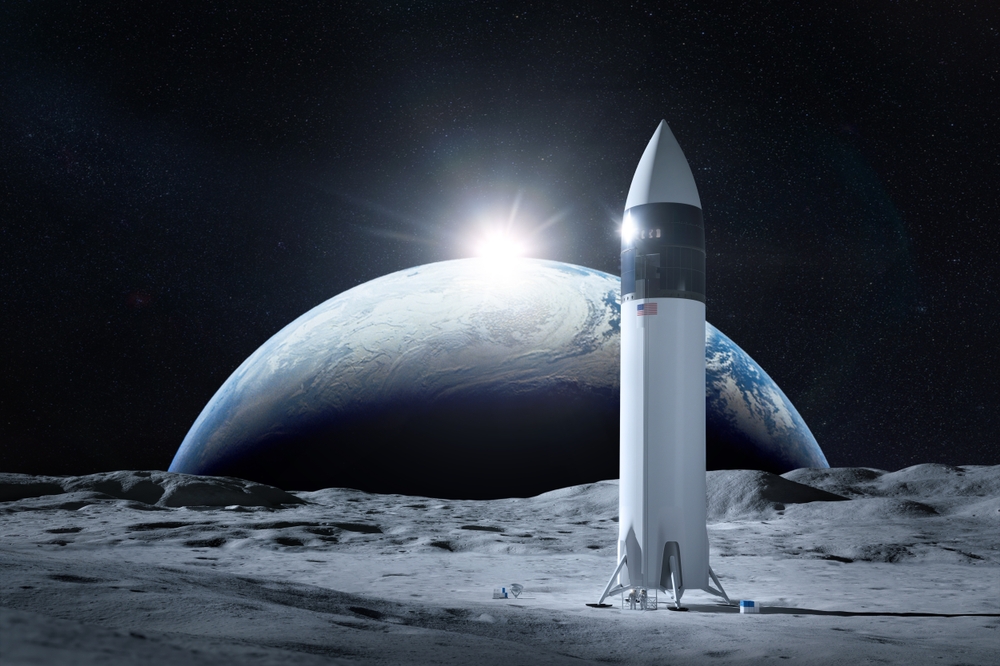
The Goals and Vision of Artemis II
Artemis II is more than a mission; it’s a defining moment in humanity’s effort to explore the unknown. With its primary goal of conducting a 10-day crewed lunar flyby, the mission serves as a crucial stepping stone for NASA’s long-term vision of sustainable exploration on the Moon and beyond. It’s the bridge between testing uncrewed systems in Artemis I and achieving a historic lunar landing in Artemis III.
The mission will focus on validating the life-support systems and performance of the Orion spacecraft in a deep-space environment. These tests are vital to ensuring the safety of future astronauts who will eventually live and work on the lunar surface. NASA describes Artemis II as “a mission designed to test every system, every capability, and every moment of human readiness needed for long-term exploration.”
Beyond the technical achievements, Artemis II has a broader purpose: advancing scientific discovery and inspiring a new generation of explorers. As part of its objectives, the Artemis program aims to establish a sustainable presence on the Moon by the end of the decade. This includes constructing the Lunar Gateway, a space station that will orbit the Moon and act as a hub for research and exploration.
According to NASA, these efforts are part of the agency’s commitment to using the Moon as a stepping stone for even greater ambitions, such as sending humans to Mars. “Artemis is not just a mission to the Moon; it’s humanity’s pathway to the stars,” said NASA Administrator Bill Nelson.
By combining cutting-edge technology with a bold vision for the future, Artemis II is laying the groundwork for a new era of exploration. It’s a mission that doesn’t just look to the Moon but far beyond—toward a future where humanity’s reach truly knows no bounds.
The Global Collaboration Driving Artemis II
Artemis II is a testament to the power of international collaboration, with space agencies from around the world joining forces to make this historic mission possible. While NASA leads the charge, the inclusion of the Canadian Space Agency (CSA) and the European Space Agency (ESA) highlights how humanity’s reach into the cosmos is a shared endeavor.
One of the most symbolic aspects of this collaboration is the participation of Jeremy Hansen, the Canadian astronaut who will become the first non-American to venture beyond low Earth orbit. Canada’s contribution to Artemis includes the development of Canadarm3, an advanced robotic system that will be used on the Lunar Gateway. Hansen reflected on the significance of his role, saying, “This mission proves what we can achieve when we work together—nations united by curiosity, ambition, and a common goal.”
The European Space Agency has also played a pivotal role, supplying the European Service Module (ESM), which powers and propels the Orion spacecraft. The ESM provides air, water, and electricity for the astronauts, making it an indispensable part of the mission. “The European Service Module is at the heart of this mission,” ESA officials said, emphasizing its role as a foundation for future human exploration.
This spirit of global cooperation is central to the Artemis program’s vision of inclusivity and shared progress. NASA Administrator Bill Nelson stated, “The Artemis missions are not just about America going to the Moon; they’re about humanity going to the Moon. Together, we’re proving what’s possible.”
The international partnerships behind Artemis II not only strengthen diplomatic ties but also ensure that the mission benefits all of humanity. By pooling expertise, resources, and innovation, these collaborations are creating opportunities that extend beyond national boundaries—reminding us that space exploration is a global effort driven by a shared dream.

The Technology Powering Artemis II
Artemis II stands as a showcase of cutting-edge technology, blending decades of engineering advancements with new innovations designed to push the boundaries of human exploration. At the heart of the mission are the Orion spacecraft and the Space Launch System (SLS), two groundbreaking systems that make Artemis II possible.
The Orion spacecraft serves as the astronauts’ home for the duration of the mission. Designed to withstand the harsh environment of deep space, Orion is equipped with advanced life-support systems, radiation shielding, and navigation technologies. Its European-built Service Module (ESM) supplies propulsion, electricity, and vital resources such as water and oxygen. According to ESA, “The European Service Module is the powerhouse of Orion, enabling it to go farther than any human-rated spacecraft before.”
Complementing Orion is the Space Launch System (SLS), NASA’s most powerful rocket ever built. Towering at 322 feet, the SLS generates a staggering 8.8 million pounds of thrust, enough to propel the crew on their journey to the Moon. NASA officials describe it as “the backbone of the Artemis program, designed to take us deeper into space than ever before.” The rocket’s performance during Artemis I demonstrated its capability, clearing the way for its crewed debut in Artemis II.
Another key innovation supporting Artemis II is the Launch Abort System (LAS), which ensures the astronauts’ safety in the event of an emergency during launch. This system, mounted atop the Orion spacecraft, can pull the crew to safety within milliseconds, showcasing the program’s commitment to prioritizing human life.
Together, these technologies represent the pinnacle of human ingenuity. They are not only enabling the Artemis II mission but are also laying the foundation for future lunar landings and interplanetary travel. As NASA’s Deputy Administrator Pam Melroy stated, “Artemis II is proof that we have the tools, the talent, and the tenacity to explore beyond our world.”
By integrating proven systems with innovative designs, Artemis II serves as a blueprint for the future of space exploration, showing what’s possible when ambition meets cutting-edge technology.
Ancient History
Jungle-Penetrating Lasers Reveal Thousands Of Ancient Mayan Structures

For centuries, the dense rainforests of Central America held their secrets tightly, concealing the remains of a once-thriving civilization. The Maya, known for their monumental architecture, intricate city planning, and advanced understanding of the natural world, seemed to vanish into history, leaving behind whispers of their greatness. But what if the full story of their society was still waiting to be uncovered, hidden beneath layers of vegetation?
Thanks to groundbreaking technology, researchers are now peeling back the jungle’s verdant curtain, revealing an ancient world far larger and more complex than anyone imagined. Using lasers that penetrate even the thickest forest canopy, archaeologists are not only finding lost cities but also rewriting what we know about this mysterious civilization. What secrets have been unearthed, and how does this discovery change our understanding of the Maya’s extraordinary legacy?
The Maya Civilization: A Brief Overview

The Maya civilization, flourishing in Mesoamerica, is renowned for its remarkable achievements in architecture, mathematics, astronomy, and writing. Spanning present-day southeastern Mexico, Guatemala, Belize, and parts of Honduras and El Salvador, the Maya developed a complex society that has intrigued scholars and enthusiasts alike.
The evolution of Maya civilization is typically divided into three principal periods:
- Preclassic Period (c. 2000 BCE – 250 CE): This era marked the transition from nomadic farming communities to established villages. By 1000 BCE, settlements had spread throughout the Maya lowlands, with regional centers emerging by 300 BCE.
- Classic Period (c. 250 – 900 CE): Often considered the golden age of the Maya, this period saw the rise of major city-states such as Tikal, Uaxactún, Copán, and Palenque. The civilization expanded to approximately 40 cities, each with populations ranging from 5,000 to 50,000 inhabitants.
- Postclassic Period (c. 900 – 1500 CE): Following the decline of many southern cities, northern centers like Chichen Itza gained prominence. This era continued until the Spanish conquest in the 16th century.
Maya society was hierarchical, with a ruling class overseeing various aspects of life, including religion, politics, and commerce. They are celebrated for their sophisticated writing system, the most advanced in pre-Columbian Americas, as well as their art, architecture, and scientific knowledge.
The Maya constructed impressive pyramids, palaces, and ceremonial centers, often aligned with astronomical events. Their agricultural practices included terrace farming and irrigation systems, enabling them to sustain large populations. Recent LiDAR technology has unveiled extensive modifications to the landscape, such as terraces, irrigation channels, reservoirs, fortifications, and causeways, revealing “an astonishing amount of land modification done by the Maya over their entire landscape on a scale previously unimaginable.”
The Maya civilization’s contributions continue to influence contemporary society, particularly in areas like calendar systems and architectural design. Their descendants still inhabit Central America, preserving many aspects of their rich cultural heritage.
How LiDAR Works: Revolutionizing Archaeology
LiDAR, an acronym for Light Detection and Ranging, is a remote sensing technology that employs laser pulses to generate precise, three-dimensional maps of the Earth’s surface. By emitting laser beams from an aerial platform—such as an airplane or drone—LiDAR measures the time it takes for each pulse to bounce back after hitting the ground or other objects. This data is then used to construct detailed topographical models, effectively “peeling back” dense vegetation to reveal the underlying terrain.
In the realm of archaeology, LiDAR has been transformative, especially in regions where thick forest canopies obscure ancient structures. Traditional ground-based surveys are often labor-intensive and limited in scope, but LiDAR allows researchers to survey extensive areas rapidly and with remarkable accuracy. As archaeologist Marcello Canuto notes, “LiDAR has been revolutionary for archaeology in this area, especially if it’s covered in tropical forest where visibility is limited.”
The application of LiDAR in Mesoamerican studies has led to groundbreaking discoveries. For instance, a LiDAR survey in northern Guatemala unveiled a vast network of ancient Maya structures previously hidden beneath the jungle canopy. This included more than 60,000 houses, palaces, elevated highways, and other human-made features, revealing a sprawling pre-Columbian civilization that was far more complex and interconnected than most Maya specialists had supposed.
Similarly, in Mexico’s Yucatán Peninsula, LiDAR technology uncovered the ancient city of Valeriana, revealing over 6,500 pre-Hispanic structures, including pyramids and causeways, that had been concealed by dense vegetation. This discovery highlighted the density and variability of Maya settlements, challenging previous assumptions about the civilization’s urban and rural distribution.
By enabling archaeologists to visualize and analyze landscapes on a macro scale, LiDAR not only facilitates the discovery of hidden sites but also enhances our understanding of ancient civilizations’ spatial organization and environmental adaptations. As Canuto emphasizes, “We can now see the entire landscape of the Maya region,” allowing for a more comprehensive understanding of how these societies functioned and interacted with their environment.
Major Discoveries: Mapping the Hidden Cities
The application of LiDAR technology has unveiled a vast network of ancient Maya structures previously concealed beneath dense tropical canopies. In Guatemala’s Petén region, over 60,000 previously unknown structures—including houses, palaces, elevated highways, and defensive fortifications—have been identified. This revelation suggests a civilization far more complex and interconnected than previously understood.
In northern Guatemala’s Mirador-Calakmul Karst Basin, LiDAR surveys have revealed approximately 1,000 ancient Maya settlements. These sites are interconnected by an extensive network of causeways, indicating a high degree of political and economic integration.
Similarly, in Mexico’s Yucatán Peninsula, the ancient city of Valeriana was discovered using LiDAR technology. This site encompasses over 6,500 pre-Hispanic structures, including pyramids and causeways, highlighting the density and variability of Maya settlements in the region.
These findings challenge previous assumptions about the Maya civilization, revealing a level of societal complexity and environmental adaptation that was previously underestimated. As archaeologist Francisco Estrada-Belli remarked, “LiDAR is revolutionizing archaeology the way the Hubble Space Telescope revolutionized astronomy.”
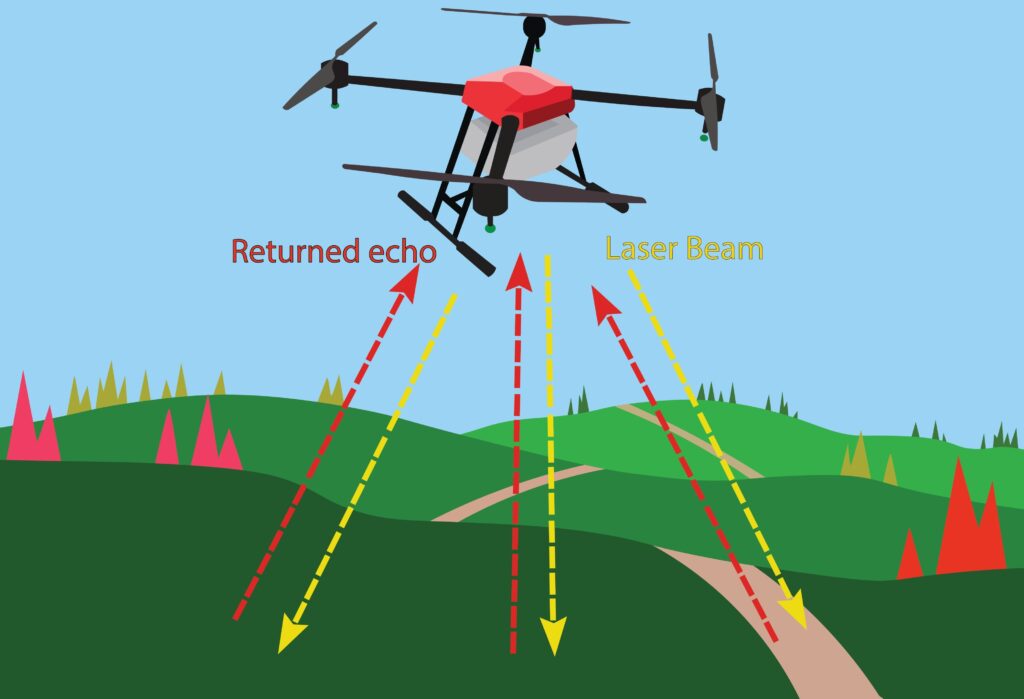
Rewriting Maya History
The advent of LiDAR technology has profoundly transformed our understanding of the ancient Maya civilization, challenging long-held assumptions and revealing a society of remarkable complexity and sophistication. Traditional archaeological methods often portrayed the Maya lowlands as sparsely populated regions with isolated city-states. However, LiDAR surveys have unveiled extensive urban and rural networks, indicating a densely populated and interconnected civilization. As noted by National Geographic, “Dozens of lidar surveys…have upended long-established impressions of a civilization that thrived in one of Earth’s least hospitable regions.”
These revelations have prompted scholars to reevaluate the societal and political structures of the Maya. The discovery of vast causeways, agricultural terraces, and irrigation systems suggests a centralized planning and governance previously unrecognized. Carlos Morales-Aguilar, a researcher involved in LiDAR studies, remarked, “We can now see the entire landscape of the Maya region,” highlighting the unprecedented scale of these findings.
Furthermore, the identification of previously unknown urban centers, such as the city of Valeriana in Mexico’s Yucatán Peninsula, underscores the extensive reach and diversity of Maya settlements. This city, revealed through LiDAR analysis, encompasses over 6,500 pre-Hispanic structures, including pyramids and causeways, challenging previous notions of Maya urbanization.
Collectively, these discoveries necessitate a comprehensive reassessment of Maya history, acknowledging the civilization’s advanced engineering, agricultural innovation, and complex societal organization. As archaeologist Francisco Estrada-Belli aptly stated, “LiDAR is revolutionizing archaeology the way the Hubble Space Telescope revolutionized astronomy.”
The Future of LiDAR in Archaeology
LiDAR technology has revolutionized archaeological research, enabling the detection and analysis of sites obscured by dense vegetation or challenging terrains. Its ability to produce high-resolution, three-dimensional maps of the Earth’s surface has unveiled previously hidden structures and landscapes, offering profound insights into ancient civilizations.
The integration of LiDAR with unmanned aerial vehicles (UAVs), commonly known as drones, has further enhanced its applicability. This combination allows for rapid and extensive surveying of archaeological sites, significantly reducing the time and labor traditionally required. As noted in a study on LiDAR drones in archaeological excavations, “This method ensures comprehensive coverage of archaeological sites in a fraction of the time traditional surveys would take.”
Moreover, advancements in machine learning and artificial intelligence are augmenting the processing and interpretation of LiDAR data. Automated algorithms can now assist in identifying and classifying archaeological features within LiDAR datasets, increasing efficiency and accuracy. A recent study highlights that “advances in machine learning and VR/AR have further resulted in improved classification and visualization.”
However, the application of LiDAR in archaeology is not without challenges. The technology can produce vast amounts of data, necessitating substantial storage and processing capabilities. Additionally, while LiDAR can penetrate vegetation to reveal ground surfaces, its effectiveness can be limited by factors such as dense canopy cover and terrain ruggedness. A case study evaluating LiDAR’s effectiveness over known archaeological sites noted that “vegetation cover, particularly during leaf-on periods, can interfere with the ability of LiDAR to penetrate to the surface and can therefore impact its accuracy.”
Illuminating the Maya Legacy
LiDAR technology has opened an extraordinary window into the past, unveiling the hidden grandeur of the ancient Maya civilization. From sprawling cities and intricate networks of causeways to advanced agricultural systems, these discoveries challenge long-held assumptions about the scale and complexity of this remarkable society. As Francisco Estrada-Belli aptly noted, “LiDAR is revolutionizing archaeology the way the Hubble Space Telescope revolutionized astronomy,” and this revolution is far from over.
While we marvel at the ingenuity of the Maya and their ability to thrive in challenging environments, these findings also remind us of the fragility of civilizations and their dependence on sustainable interactions with nature. LiDAR’s continued use in archaeology promises to unearth countless more secrets, not only from the Maya but also from other ancient cultures obscured by the passage of time.
By revealing the intricate tapestry of human history, LiDAR not only enriches our understanding of the past but also inspires us to reflect on our own place within the evolving narrative of human civilization. The story of the Maya is no longer buried; it is a vivid reminder of resilience, innovation, and the enduring quest for knowledge.
Environment
Earth’s Spinning Inner Core May Be Slowing Down Compared To Earth’s Surface
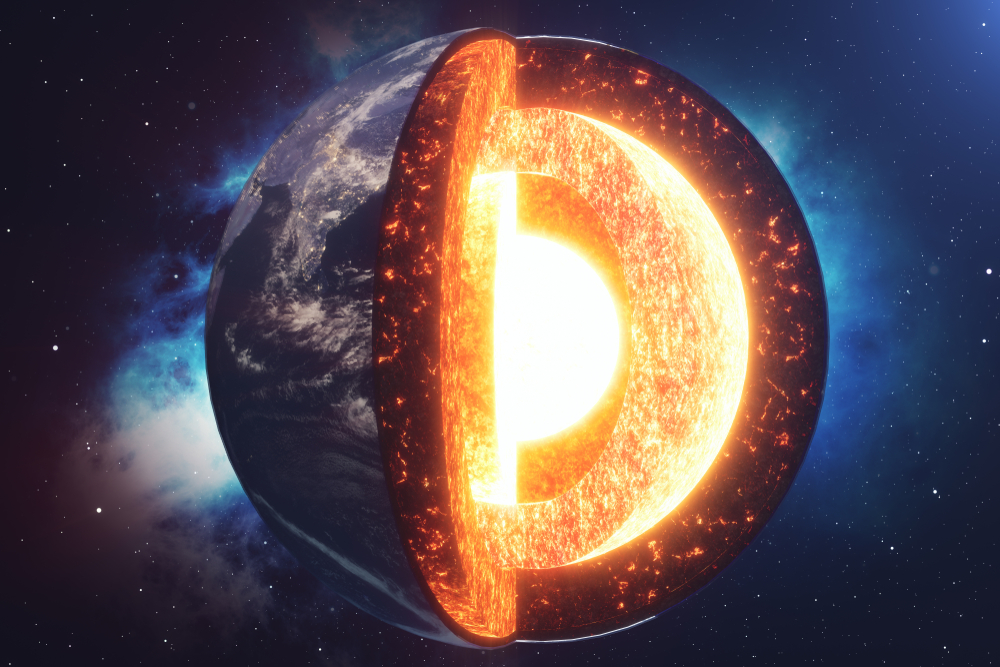
Deep beneath our feet, a secret rhythm pulses within the Earth’s core—a dynamic, swirling dance that has captivated scientists for decades. Far from the reach of human instruments, this mysterious inner core spins like a celestial body trapped within our planet, its movement hinting at the hidden forces shaping our world.
Recent studies suggest a surprising twist in this tale: the inner core’s spin may be slowing down, sparking questions about what this could mean for the Earth’s magnetic field, day length, and even the future of our planet. While the effects remain imperceptible to daily life, the implications stretch far beyond what meets the eye.
What lies at the heart of this discovery? And how does a slowing inner core impact the Earth as we know it?
What Is the Earth’s Inner Core?
Nestled at Earth’s center lies the inner core—a solid sphere composed predominantly of iron and nickel, with a radius of approximately 1,220 kilometers, about 70% that of the Moon. Despite its scorching temperatures, comparable to the Sun’s surface, the immense pressures render it solid. This inner core is encased by a fluid outer core, allowing it to rotate independently from Earth’s mantle and crust.
The concept of the inner core’s differential rotation emerged in the 1970s and ’80s, gaining traction in the ’90s with seismological evidence. By analyzing seismic waves from earthquakes traversing the inner core, scientists observed variations in wave behavior over time, suggesting that the inner core rotates at a different rate than Earth’s surface. This differential rotation is believed to be influenced by the dynamic interactions between Earth’s magnetic field and gravitational forces.
Recent studies have provided compelling evidence that the inner core’s rotation is not constant but oscillates over decades. A 2023 study published in Nature Geoscience proposed that the inner core’s rotation undergoes a 70-year cycle, alternating between periods of spinning slightly faster and slightly slower than Earth’s surface. This finding was further supported by a 2024 study in Nature, which confirmed that the inner core began to decrease its speed around 2010, moving slower than Earth’s surface.
Understanding the inner core’s behavior is crucial, as it plays a significant role in generating Earth’s magnetic field and can influence phenomena such as the length of a day. However, due to the inner core’s inaccessibility, much of its dynamics remain shrouded in mystery, with ongoing research striving to unravel its secrets.
As Dr. John Vidale, a seismologist at the University of Southern California, remarked, “We’ve been arguing about this for 20 years, and I think this nails it.” This sentiment underscores the scientific community’s dedication to comprehending the inner workings of our planet.
The Discovery: Slowing Spin

In recent years, scientists have uncovered compelling evidence that Earth’s inner core—a solid sphere of iron and nickel—has been experiencing changes in its rotation relative to the planet’s surface. This revelation stems from meticulous analyses of seismic waves generated by earthquakes, which traverse the Earth’s interior and provide insights into the dynamics of the inner core.
A pivotal study published in Nature Geoscience in January 2023 by researchers from Peking University analyzed seismic data from the 1960s to 2021. Their findings indicated that the inner core’s rotation had nearly halted around 2009 and might have even reversed direction. The researchers proposed that this phenomenon is part of a 70-year oscillation cycle, wherein the inner core alternates between rotating slightly faster and slightly slower than the Earth’s surface.
Further supporting this concept, a June 2024 study published in Nature by scientists from the University of Southern California provided unambiguous evidence that the inner core began to decrease its speed around 2010, moving slower than the Earth’s surface. This study reinforced the idea of a decadal oscillation in the inner core’s rotation.
These findings have significant implications for our understanding of Earth’s internal processes. The oscillation in the inner core’s rotation is believed to be linked to variations in the Earth’s magnetic field and could influence the length of a day. However, the exact mechanisms driving these changes remain a subject of ongoing research and debate within the scientific community.
As Dr. John Vidale, a seismologist at the University of Southern California, remarked, “When I first saw the seismograms that hinted at this change, I was stumped. But when we found two dozen more observations signaling the same pattern, the result was inescapable.”
How the Core’s Movement Impacts Earth
The inner core’s rotation plays a pivotal role in Earth’s geophysical phenomena, particularly influencing the planet’s magnetic field and the length of a day. The motion of the liquid iron outer core, which surrounds the solid inner core, generates Earth’s magnetic field through the geodynamo process. The inner core’s rotation contributes to stabilizing and sustaining this magnetic field.
Recent studies have observed that the inner core’s rotation has been slowing down since around 2010. This deceleration could potentially affect the dynamics of the outer core and, consequently, the Earth’s magnetic field. However, any changes are expected to be subtle and occur over long timescales.
Additionally, the inner core’s rotation influences Earth’s rotation rate, thereby affecting the length of a day. As the inner core’s rotation slows, it may cause slight variations in the planet’s rotation rate. However, these changes are expected to be on the order of milliseconds and would not be noticeable in everyday life.
Understanding the inner core’s behavior is crucial, as it plays a significant role in generating Earth’s magnetic field and can influence phenomena such as the length of a day. However, due to the inner core’s inaccessibility, much of its dynamics remain shrouded in mystery, with ongoing research striving to unravel its secrets.
As Dr. John Vidale, a seismologist at the University of Southern California, remarked, “When I first saw the seismograms that hinted at this change, I was stumped. But when we found two dozen more observations signaling the same pattern, the result was inescapable.”

The Ongoing Debate
The rotation of Earth’s inner core has been a subject of scientific debate for decades. Early studies in the 1990s suggested that the inner core rotates slightly faster than the Earth’s mantle and crust—a phenomenon termed “super-rotation.” However, more recent research indicates that this rotation may not be constant and could even reverse direction over time.
In 2023, a study published in Nature Geoscience proposed that the inner core’s rotation undergoes a 70-year cycle, alternating between periods of super-rotation and sub-rotation. This finding was further supported by a 2024 study in Nature, which provided evidence that the inner core began to decrease its speed around 2010, moving slower than the Earth’s surface.
Despite these findings, the scientific community remains divided. Some researchers argue that observed changes in seismic wave travel times could be attributed to physical alterations on the inner core’s surface rather than changes in its rotation.
Others suggest that the inner core’s movement is more complex than a simple oscillation and may involve irregular patterns influenced by interactions with the outer core and mantle.
The challenges in studying the inner core stem from its inaccessibility; scientists rely on indirect measurements, such as seismic wave analyses, which can lead to varying interpretations. As a result, while recent studies have provided valuable insights, the exact nature of the inner core’s rotation and its implications for Earth’s geodynamics remain active areas of research and debate.
As Dr. John Vidale, a seismologist at the University of Southern California, noted, “Other scientists have recently argued for similar and different models, but our latest study provides the most convincing resolution.”
The Pulse of Our Planet
The discovery of the Earth’s inner core’s slowing rotation is a testament to the complexity and dynamism of our planet’s hidden layers. While imperceptible in our daily lives, the changes deep beneath our feet influence magnetic fields, seismic activity, and even the length of a day. These revelations remind us that our world is constantly evolving, driven by forces both seen and unseen.
The ongoing research into the inner core’s rotation underscores the importance of scientific curiosity and collaboration. As technology advances and new methods emerge, the mysteries of Earth’s interior will continue to unravel, offering deeper insights into the forces that shape our planet. For now, the slowing spin of the inner core stands as a captivating reminder of the interconnectedness of Earth’s layers and the intricate dance that keeps our world in motion.
News
Elementary School Students Discover EpiPens Turn Extremely Poisonous In Space

In the boundless expanse of space, even the most trusted tools can turn treacherous. A group of bright, young minds from St. Brother André Elementary School has stumbled upon a startling discovery that challenges our assumptions about medical safety in outer space. While experimenting with EpiPens under the harsh conditions of cosmic radiation, these students unearthed a potentially life-threatening transformation that no one—not even NASA—had anticipated. This revelation not only raises critical questions about the reliability of essential medications beyond Earth but also marks a significant leap in our understanding of space’s impact on pharmaceuticals.
Cosmic Challenges for Medical Safety in Space
In an inspired union of education and space exploration, students from St. Brother André Elementary School’s Program for Gifted Learners embarked on a fascinating scientific venture to explore the effects of cosmic radiation on medical devices—specifically EpiPens. This journey began with a simple, yet profound question: How does exposure to space conditions affect the efficacy of EpiPens, which are crucial for treating severe allergic reactions?
Collaborating with NASA through the innovative “Cubes in Space” program, these young scientists launched their experiment into the vast unknown. They adapted the standard EpiPen format to fit within small payload cubes, due to the constraints of the project, which were then sent into space aboard a rocket and a high-altitude balloon. This unique setup allowed the students to directly investigate the stability of epinephrine, the active ingredient in EpiPens, under the influence of cosmic radiation.
Upon their return to Earth, the samples underwent rigorous analysis at the University of Ottawa’s John L. Holmes Mass Spectrometry Facility. The findings were startling. Instead of the stable life-saving medication they had sent up, the analysis revealed that a significant transformation had occurred: 13% of the epinephrine had degraded into toxic benzoic acid derivatives, leaving the remaining 87% in a compromised state. This chemical alteration rendered the EpiPens not only ineffective but potentially hazardous.
Professor Paul Mayer, from the University of Ottawa’s Department of Chemistry and Biomolecular Sciences, highlighted the impact of these findings, stating that the degraded samples posed serious questions about the viability of EpiPens for space travel. These discoveries underline a critical area of concern for astronaut safety and the preservation of medications in extraterrestrial environments.
Encouraged by their findings and driven by a natural curiosity, the students are not stopping here. They are currently designing a protective capsule that could shield EpiPens and other medications from the harsh realities of cosmic radiation. This proactive approach could pave the way for safer long-duration human spaceflights, where every medical tool counts.
This initiative not only showcases the potential of young minds to contribute significantly to science but also emphasizes the need for continued research into the effects of space travel on health and medicine. As we look towards future missions and the possibility of interplanetary travel, ensuring the stability and safety of medical supplies in space will be paramount.

Unveiling the Unexpected Toxicity of EpiPens in Space
The experiment conducted by the students from St. Brother André Elementary School yielded groundbreaking results that have profound implications for space travel and medical safety. Upon the return of the EpiPen samples from space, a detailed analysis was conducted at the University of Ottawa, revealing startling transformations in the epinephrine’s chemical composition.
The primary finding was that the epinephrine within the EpiPens had degraded significantly due to exposure to cosmic radiation. Only 87% of the original substance remained unchanged, while the remaining 13% had transformed into benzoic acid derivatives, compounds known for their toxicity. This degradation rendered the EpiPens not only ineffective but dangerously toxic.
Professor Paul Mayer of the Faculty of Science’s Department of Chemistry and Biomolecular Sciences commented on the severity of these findings, emphasizing the impact on the viability of such medical interventions in space:
“In fact, no epinephrine was found in the ‘after’ EpiPen solution samples,” Mayer stated. “This result raises questions about the efficacy of an EpiPen for outer space applications and these questions are now starting to be addressed by the kids.”
The implications of these results are significant. Cosmic radiation, composed of high-energy particles emitted by the sun and other celestial bodies, poses a known threat to astronauts’ health, increasing the risk of conditions such as radiation sickness, cancer, and other diseases. The experiment highlights a new dimension of this risk—its effect on medications, crucial for emergency medical interventions.
These findings align with existing research on the vulnerability of pharmaceuticals to environmental factors and the specific challenges posed by space conditions. Studies have indicated that many medications show altered stability profiles under conditions of microgravity, radiation, and other stresses typical of the space environment.
The students’ work contributes to a vital area of space research, indicating a need for the development of medication formulations and packaging that can withstand the unique conditions of space. This will be essential for ensuring the safety and well-being of astronauts as missions venture further into space and for longer durations.

Rethinking Medical Safety in Space
The discovery by the students from St. Brother André Elementary School that EpiPens can become toxic in space due to cosmic radiation has significant implications for the future of space travel, particularly as missions aim to go further and last longer. This revelation highlights a critical oversight in the preparedness for medical emergencies in extraterrestrial environments and sparks a broader discussion on the stability and safety of all medications in space.
- Impact on Space Medicine: The transformation of epinephrine into toxic benzoic acid derivatives under the influence of cosmic radiation underscores the urgent need for pharmaceutical stability in space. This finding is particularly alarming as it suggests that other critical medications might also be at risk of degradation in similar conditions. As Professor Paul Mayer noted, “This result raises questions about the efficacy of an EpiPen for outer space applications and these questions are now starting to be addressed by the kids.”
The broader medical and space exploration communities must consider these findings seriously, as they could have direct implications for the health and safety of astronauts. Ensuring that astronauts have access to effective and safe medical treatments is paramount, especially as missions extend to the Moon, Mars, and beyond.
- Regulatory and Research Directions: This discovery may prompt space agencies and pharmaceutical researchers to re-evaluate how medications are tested for space travel. Current standards for medical safety on Earth may not be sufficient for space, where exposure to cosmic radiation and other unique conditions can alter chemical compositions dramatically. New guidelines and more rigorous testing protocols may need to be developed to address these challenges.
- Innovation and Engineering Solutions: Encouraged by their findings, the students are already working on potential solutions, including the design of a protective capsule to shield EpiPens and possibly other medications from the harmful effects of cosmic radiation. This proactive approach could lead to innovations that benefit not just space travel but also other areas where medication stability is affected by environmental factors.
- Educational and Inspirational Impact: Moreover, this discovery highlights the importance of engaging young minds in real-world scientific challenges. The project not only contributes valuable data to the field of space medicine but also inspires a new generation of scientists, engineers, and explorers. As Professor Mayer expressed, the success of these students confirms that “Kids are natural scientists. They are curious and ask questions. We adults just need to facilitate their participation in the scientific process, and then get out of the way and let them explore and learn.”
Pioneering Protection for Space Medications
The students from St. Brother André Elementary School did not stop at just discovering a significant issue with EpiPens in space; they are actively working on innovative solutions to mitigate this newfound risk. Motivated by their groundbreaking findings, these young scientists are in the process of designing a protective capsule that aims to safeguard epinephrine from the deleterious effects of cosmic radiation.
- Developing Protective Technologies: The concept involves a specialized container that can insulate the medication from the high-energy particles pervasive in space. This capsule is designed to counter the specific conditions that caused the epinephrine degradation observed in their experiments. As Professor Paul Mayer stated, “The students are now designing a capsule to protect EpiPens while in space. In June, they will travel to the Langley Research Center in Hampton, Virginia, to present their findings to NASA.” This initiative represents a practical application of their research, potentially revolutionizing how medical supplies are maintained in space environments.
- Collaborative Efforts and Engineering Challenges: The design process is not only a technical challenge but also a collaborative educational endeavor. It allows students to apply theoretical knowledge in physics, chemistry, and engineering to solve real-world problems. The protective capsule project could also serve as a blueprint for future innovations in space travel, particularly in how we approach the stability of various other medications essential for long-term missions.
- Encouraging Broader Participation in Space Research: This student-led project is an exemplary model of how educational programs like NASA’s Cubes in Space can facilitate significant contributions to science from unexpected quarters. It emphasizes the importance of fostering scientific curiosity and problem-solving skills from a young age. As highlighted by the enthusiastic response from the scientific community and media, these students have shown that with the right support and resources, young learners can contribute meaningfully to cutting-edge research.
- Looking Forward: The implications of this work extend beyond the immediate scope of their project. They are setting a precedent for how young researchers can influence the field of space exploration and medicine. According to Mayer, “Kids are natural scientists. They are curious and ask questions. We adults just need to facilitate their participation in the scientific process, and then get out of the way and let them explore and learn.” This project may well inspire similar initiatives worldwide, where students can engage directly with complex challenges and develop solutions that impact our understanding and preparedness for space exploration.
The development and testing of the protective capsule will continue to be a focus for these students as they refine their design and prepare for further tests and presentations. Their work promises to be a stepping stone towards safer and more reliable use of medications in outer space, ensuring that future astronauts are better equipped and safeguarded against the unforeseen challenges of extraterrestrial environments.
The Next Steps in Space Medicine
As we reflect on the groundbreaking discovery by students from St. Brother André Elementary School, the implications for space medicine are profound and inspiring. The innovative spirit of these young minds has not only shed light on a significant issue but has also sparked a series of initiatives aimed at overcoming it. Their work serves as a powerful reminder of the critical role of continuous innovation and proactive problem-solving in ensuring the safety and success of future space missions.
The students have embarked on the design of a protective capsule intended to shield medications like EpiPens from the damaging effects of cosmic radiation. This endeavor is not just a response to a scientific challenge but also a proactive step towards enhancing the medical preparedness of astronauts. As they prepare to present their findings and their prototype to NASA, the potential for these young innovators to influence the standards of space travel is immense.
Moreover, the project has underscored the importance of educational programs that engage students in real-world scientific problems. Initiatives like NASA’s Cubes in Space program provide invaluable opportunities for students to contribute to vital research, fostering a generation of thinkers and doers equipped to handle the complexities of tomorrow.
As the space community continues to explore and inhabit new frontiers, the lessons learned from these students will undoubtedly influence future missions. Ensuring that all spacefarers have safe and effective medical resources is as crucial as any technological advancement in spacecraft or habitation modules.
The journey of these elementary students from curiosity to innovation exemplifies the potential of educational engagement in science and technology. Their work not only advances our preparedness for space travel but also illuminates the path for future explorers, scientists, and medical professionals.
News
UK Meteorite That Fell To Earth Contains Building Blocks For Life

In the quiet expanse of the night sky over Gloucestershire in early 2021, a brilliant streak of light announced the arrival of something extraordinary—a rare visitor from the depths of space. This was no ordinary meteorite; it was a bearer of mysteries locked within its ancient, rocky core. Dubbed the Winchcombe meteorite, this celestial object is now at the forefront of a groundbreaking scientific revelation that might just hold the keys to understanding the origins of life itself. What secrets do these cosmic fragments hold about the building blocks of life as we know it?
Discovery and Initial Analysis of the Winchcombe Meteorite
The Winchcombe meteorite, which graced the skies over Gloucestershire, UK in 2021, has proven to be a remarkable source of scientific data, particularly regarding the origins of life. This meteorite is classified as a carbonaceous chondrite, a rare type of meteorite known for containing high levels of organic compounds.
Upon its rapid recovery—within just 12 hours of landing—the pristine condition of the Winchcombe meteorite allowed scientists to prevent most terrestrial contamination and preserve its authentic cosmic composition. This quick retrieval was crucial, as the integrity of nitrogen-bearing compounds within the meteorite are highly susceptible to alteration by Earth’s environment.
The advanced analysis conducted using electron microscopy at the SuperSTEM laboratory revealed the presence of amino acids and polycyclic aromatic hydrocarbons (PAHs), fundamental organic compounds considered as building blocks of life. This method proved particularly beneficial as it avoids the use of chemicals that could alter the sample, providing a clearer picture of the meteorite’s original state.
Dr. Queenie Chan’s team at Royal Holloway highlighted the importance of these findings. The organic compounds discovered, particularly amino acids, are key to understanding early life’s chemical beginnings. These discoveries offer a glimpse into the solar system’s history and suggest that such meteorites might have contributed to seeding early life on Earth by delivering these essential organic materials.
Scientific Significance of the Winchcombe Meteorite Discovery

The discovery of the Winchcombe meteorite has profound implications for the field of astrobiology and our understanding of the solar system’s history. This meteorite, a carbonaceous chondrite, has provided valuable insights due to its rich content of organic compounds, including amino acids, which are essential for life. These discoveries are significant because they support the hypothesis that the building blocks of life on Earth may have been delivered from space via meteorites like Winchcombe.
Amino acids are critical components of proteins, which are necessary for life as we know it. The presence of these organic compounds in the Winchcombe meteorite suggests that similar space rocks could have contributed to the prebiotic chemistry that led to life on Earth. This notion is bolstered by the pristine condition of the meteorite, which avoided terrestrial contamination due to its rapid recovery post-fall. The specific conditions and chemical environment of the Winchcombe meteorite’s parent asteroid might have facilitated the synthesis of these amino acids, making it a valuable sample for studying the potential for life’s origins in similar extraterrestrial environments.
The findings from the Winchcombe meteorite not only enhance our understanding of the chemical processes that may occur on asteroids but also help trace the solar system’s evolutionary history. The ability to analyze these compounds without the interference of chemical treatments marks a significant advancement in meteoritic research. This methodological innovation is crucial for accurately studying the complex organic chemistry of celestial bodies and could influence future analyses of samples returned from space missions, such as those from asteroids by Hayabusa2 and OSIRIS-REx.
The research on the Winchcombe meteorite extends beyond academic interest. It provides a clearer picture of how organic compounds are distributed in the cosmos and their role in the emergence of life, potentially on planets beyond Earth. These insights not only deepen our understanding of life’s potential ubiquity in the universe but also underscore the importance of future missions aimed at collecting and analyzing extraterrestrial samples.
Comparison with Other Meteorites
The Winchcombe meteorite offers unique insights when compared with other carbonaceous chondrites, particularly in its composition and the conditions it endured through the solar system’s history. Classified as a CM carbonaceous chondrite, it shares characteristics with other members of this class but also displays unique features that set it apart.
Unique Features of the Winchcombe Meteorite
- Preservation and Pristine Condition: The Winchcombe meteorite is noted for its excellent preservation, which has allowed for a level of analysis almost unprecedented for a meteorite not directly returned from space missions like those involving moon rocks or asteroid samples. This pristine condition is attributed to its rapid recovery, which minimized contamination and preserved its original composition.
- Water and Organic Compounds: The presence of water and organic compounds in Winchcombe is particularly significant. Studies suggest that parts of the meteorite were chemically altered by water from its parent asteroid, which likely facilitated the formation of its amino acids—some of which are rare on Earth. This supports theories that carbonaceous chondrites like Winchcombe could have delivered the ingredients necessary for the emergence of life on Earth.
- Mineral Composition and Alteration: Winchcombe’s composition includes a high proportion of carbonate minerals, suggesting a carbon-rich nature that might have accumulated and later melted from frozen CO2. This finding is important as it provides insights into the meteorite’s thermal history and the chemical processes that occurred on its parent body before it landed on Earth.
Winchcombe’s composition and mineralogy align it with other highly aqueously altered CM chondrites, but it also shows unique aspects in its mineral composition that are not commonly observed. These unique features include variations in its magnetic composition, which provides valuable data about the magnetic conditions during its formation, offering clues about the early solar system’s environmental conditions.
Implications for Astrobiology

The discovery of the Winchcombe meteorite has significant implications for the field of astrobiology, particularly in understanding the origin and distribution of life across the cosmos. The presence of organic compounds such as amino acids and nucleobases within Winchcombe, which are crucial for life, supports the longstanding hypothesis that life’s building blocks were delivered to Earth by meteorites and comets.
Astrobiological Significance
- Organic Compound Formation: The Winchcombe meteorite demonstrates that organic compounds can form in the harsh conditions of space and be preserved in meteorites. This discovery underscores the possibility that life, or at least the conditions necessary for life, could be more widespread in the universe than previously thought. The ability of these organic materials to survive in space bolsters the theory that life might not be unique to Earth but could potentially arise wherever the right conditions exist.
- Water-Bearing Minerals: The co-existence of water-bearing minerals and organic compounds in Winchcombe suggests that meteorites could have delivered not only the chemical precursors to life but also the water necessary for biological processes. This has profound implications for the potential habitability of other planets and moons in our solar system, such as Mars or Europa, which may have environments where similar chemical processes could occur.
- Biosignature Detection in Space Missions: Understanding the formation of life’s building blocks in meteorites like Winchcombe can enhance the methods used by scientists to detect biosignatures on other planets. This knowledge is critical for missions that aim to find signs of past or present life on other celestial bodies. The insights gained from Winchcombe can help refine the techniques for detecting similar compounds in the atmospheres or surfaces of planets and moons.
The findings from the Winchcombe meteorite not only advance our scientific understanding but also prompt deeper philosophical and spiritual reflections on humanity’s place in the universe. The notion that the ingredients for life are scattered throughout the cosmos and might converge to create life under favorable conditions suggests a potentially interconnected universe where life’s emergence is a general rule rather than an exception.
Future Research and Exploration
The Winchcombe meteorite’s discoveries have opened several new avenues for future research and exploration, promising to deepen our understanding of the early solar system and the processes that may have contributed to the origins of life on Earth.
Planned Research Directions
- Advanced Microscopy Techniques: Future studies will leverage advancements in electron microscopy to explore the Winchcombe meteorite’s organic compounds with unprecedented detail and efficiency. This will include using state-of-the-art detectors and imaging techniques that allow scientists to examine these materials at the atomic level without altering them through chemical treatments.
- Isotopic and Chemical Analysis: Researchers plan to continue detailed isotopic and chemical analysis of the Winchcombe meteorite to better understand the conditions under which it formed. This includes studying the water content and the types of organic molecules it contains, which are crucial for unraveling the meteorite’s history and its potential role in delivering life’s building blocks to Earth.
- Comparative Studies with Other Celestial Bodies: The insights gained from Winchcombe will be compared with data from other meteorites and celestial samples, including those returned by missions such as Japan’s Hayabusa2 and NASA’s OSIRIS-REx. This comparative approach is essential for confirming the findings from Winchcombe and understanding their broader implications across different environments in the solar system.
- Simulation and Modeling: To complement physical analyses, simulations and modeling of asteroidal processes observed in Winchcombe will be conducted. These studies will help clarify how water and organic molecules interact in space environments, contributing to our theoretical understanding of how life might arise on other planets.
The research on the Winchcombe meteorite is not only enhancing our knowledge of space rocks but also shaping future space missions. By identifying the types of materials that are most informative for studying the early solar system, scientists can better design missions to target asteroids that are likely to yield valuable data. This will aid in planning sample return missions and in situ analysis, providing a clearer picture of our solar system’s history and the distribution of water and life’s building blocks within it.
Epilogue: From Cosmic Seeds to Earthly Life
The study of the Winchcombe meteorite opens a unique window into the past, offering invaluable insights into the conditions that may have fostered the emergence of life on Earth. Its rare composition and the presence of organic compounds such as amino acids and nucleobases underscore the meteorite’s potential role in seeding life’s building blocks on our planet. As one of the most pristine extraterrestrial samples analyzed to date, Winchcombe not only enriches our understanding of meteoritic science but also acts as a critical piece in the puzzle of the solar system’s history.
The implications of the findings from Winchcombe extend beyond our earthly confines, influencing future missions and the search for life beyond Earth. With advanced technologies and further explorations planned, the lessons learned from this meteorite will guide the next steps in planetary science and astrobiology. As researchers continue to unravel the mysteries locked within these ancient rocks, the story of our solar system, and potentially the story of life itself, will become clearer.
This meteorite’s journey from the asteroid belt to a driveway in Gloucestershire not only captivates the imagination but also serves as a reminder of our universe’s interconnected nature and the cosmic processes that shape our world.
Ancient History
NASA Finds Underground ‘City’ Hidden 100 Foot Below Icy Surface

In the vast, icy expanses of Greenland, a place more synonymous with desolate, arctic landscapes than with the shadows of human history, NASA scientists have stumbled upon an extraordinary anomaly. Buried beneath a hundred feet of ice lies a remnant of a bygone era, originally hidden from the world above and shrouded in Cold War secrecy. What was initially just another radar scan over the frosty tundra turned into a discovery of an underground “city,” a relic of geopolitical strategies from a tension-filled past. This isn’t a tale of ancient civilizations, but rather a hidden chapter of recent history, now frozen in time, waiting to be uncovered. What secrets does this icy fortress hold?
The Discovery of Camp Century
In a groundbreaking exploration, NASA’s radar technology unveiled an extraordinary find beneath Greenland’s ice—a secret Cold War base known as Camp Century or “the city under the ice.” This discovery, made in April 2024 during a flight testing new radar equipment, revealed intricate underground structures that have not been seen so vividly until now.
While NASA scientists were testing the Uninhabited Aerial Vehicle Synthetic Aperture Radar (UAVSAR) mounted on a Gulfstream III aircraft, they captured a surprising image. Alex Gardner, a cryospheric scientist at NASA’s Jet Propulsion Laboratory, noted, “We were looking for the bed of the ice and out pops Camp Century. We didn’t know what it was at first.” This advanced radar system is not your typical radar; it’s designed to give a more dimensional view of what lies beneath the ice by not only looking downward but also to the sides.

The UAVSAR technology has proven pivotal in this discovery. It allowed the team to see the underground city in unprecedented detail, mapping out the camp’s layout against historical blueprints and revealing structures that conventional radar had missed. This novel imaging technique represents a significant leap in ice-penetrating radar technology, offering new ways to understand the geological and environmental history of icy regions.
The rediscovery of Camp Century is not just a historical curiosity but also provides crucial data for understanding ice sheet dynamics and the potential environmental impact of the materials left behind. As the climate changes, the ice sheets’ response is a vital area of study, with UAVSAR contributing to predictions about sea levels and ice stability.
History of Camp Century
Camp Century, famously known as the “City Under the Ice,” was initially presented to the public as a pioneering Arctic research station. However, its true purpose was far more clandestine. Established in 1959 by the United States Army Corps of Engineers, this secretive base was part of “Project Iceworm,” intended to test the feasibility of deploying nuclear missiles from beneath Greenland’s vast ice sheet directly against the Soviet Union.
On the surface, Camp Century featured accommodations and amenities that supported scientific research and the daily needs of its inhabitants, including laboratories, a library, and living quarters. This facade supported its cover story as a hub for polar research, where significant scientific firsts occurred, such as drilling the first ice cores to provide data on the Earth’s past climate.
Beneath its scientific guise, the camp’s primary objective was far more militaristic. The U.S. planned to create a network of tunnels capable of housing and launching “Iceman” ballistic missiles. These facilities were meant to be part of a broader strategy to ensure the U.S. could respond to Soviet actions during the Cold War. The project was ambitious, aiming to house up to 600 nuclear missiles under the guise of Arctic scientific endeavors.
The base was constructed deep within the ice, with tunnels extending over several miles. Despite the innovative approach to Cold War military strategy, the project faced insurmountable challenges. The ice’s dynamic nature caused structural instabilities within the tunnels, leading to frequent maintenance issues and eventual abandonment of the missile plan. The shifting ice also posed significant risks to the structural integrity of the facility, leading to its decommission in 1967.
In the decades following its closure, concerns have grown over the environmental impact of the waste left behind, including low-level radioactive waste from the camp’s nuclear reactor. Studies suggest that as the climate warms and the ice melts, these contaminants could be released into the environment, posing new risks to the ecosystem.
Technological and Engineering Features of Camp Century
The construction of Camp Century was a remarkable feat of engineering, designed to test the feasibility of establishing military facilities under the harsh conditions of the Greenland Ice Cap. This project was not only ambitious but also showcased a range of innovative construction techniques that have informed cold region engineering practices to this day.
Camp Century was constructed using a “cut-and-cover” method where trenches were dug into the ice and then covered with arched steel structures. This method was crucial in creating the protective tunnels that formed the main structure of the base. The entire facility was then insulated to protect against the extreme cold and to ensure that the heat generated within the base did not cause the surrounding ice to melt.
To support its designation as a self-sustaining underground city, Camp Century included living quarters, a kitchen, a hospital, and even a movie theater, all powered by a groundbreaking portable nuclear reactor, the PM-2A. This reactor was a critical component of the base, providing a reliable power source in an environment where traditional fuel supplies would be logistically challenging to maintain.
The base’s design and construction required innovative solutions to numerous challenges, such as the structural integrity of buildings under ice and the management of thermal effects caused by the heat generated within the base. These innovations have left a lasting impact on polar construction techniques and have been studied for their potential applications in other remote and harsh environments.
Moreover, the data and experience gained from the construction and operation of Camp Century have been invaluable in the development of future designs for ice-cap camps. This project demonstrated that subsurface ice-cap camps are both feasible and practical, and that nuclear power can significantly reduce the logistical burdens of supporting isolated, remote military facilities.
Secrets Uncovered
The unveiling of Camp Century’s true purpose marked a significant chapter in Cold War history. For years, the world believed that Camp Century was solely a scientific research station focusing on Arctic studies and ice core sampling. In reality, it was a cover for a highly classified military operation known as Project Iceworm.
Initially portrayed as a peaceful research facility, Camp Century was publicly celebrated as a model of polar innovation and technological achievement. The facility was featured in documentaries and news articles, praising its advanced infrastructure and the potential scientific advancements it could bring.
The truth about Camp Century came to light in 1997 when the Danish Parliament published documents revealing that the base was intended to serve as an underground launch site for nuclear missiles targeted at the Soviet Union. This disclosure came as a shock to the international community, especially since Denmark had been assured that the operations at Camp Century were purely scientific.
This revelation not only strained U.S.-Danish relations but also raised significant ethical and legal questions about the sovereignty and territorial integrity of Greenland. The Danish government expressed deep concerns, as they had not consented to the militarization of their territory, which they were led to believe was being used for benign scientific purposes.
The declassification of Project Iceworm’s objectives prompted a broader discussion about the environmental impact of the military base, particularly concerning the nuclear reactor used to power the camp. Concerns were raised about the potential release of radioactive materials stored under the ice, which could emerge due to the accelerating ice melt caused by global warming.
Camp Century’s Effect on the Environment
The thawing of Greenland’s ice sheet is poised to reveal the remnants of Camp Century, including hazardous materials such as low-level radioactive waste and polychlorinated biphenyls (PCBs), which are known carcinogens. This potential exposure is a significant environmental threat, as the melting ice could release these contaminants into the surrounding ecosystem and beyond.
As the ice melts, estimated projections suggest that by as early as 2090, the base could become exposed, unveiling not only the physical structure but also the environmental hazards contained within. This includes an estimated 9,200 tons of physical materials, 53,000 gallons of diesel fuel, and other toxic wastes such as PCBs, which have long-term persistence in the environment and can bioaccumulate in wildlife and humans.
The exposure of these contaminants poses not only environmental risks but also political and diplomatic challenges. The cleanup and management of this waste will require coordinated international efforts, potentially straining relationships between the United States, Denmark, and Greenland. The situation underscores the broader impacts of climate change, where thawing ice is not just a physical change but a catalyst for emerging political conflicts over accountability and environmental stewardship.
Echoes from the Ice: Reflecting on Camp Century’s Legacy
The rediscovery and impending exposure of Camp Century not only unearths a relic of the Cold War but also reminds us of the lasting environmental impacts of human endeavors. This hidden base, once a symbol of military ingenuity, now poses significant environmental risks as the consequences of its hazardous wastes are set to re-emerge due to the warming climate. The challenges ahead are not only technical or environmental but also deeply political, involving negotiations and responsibilities that span across nations and generations.
Featured image via Shutterstock, NASA Earth Observatory
Environment
Imagine Filling Your Car With Salt Water And Then Getting 373 Miles Per Gallon (It’s Here Now)

In a world where the shock of high gas prices continually hits our wallets and environmental concerns loom large, an innovative automotive solution emerges from the realm of science fiction into reality. Imagine a car that doesn’t guzzle gas but glides on the power of salt water, offering an astounding 373 miles per gallon. This isn’t just a futuristic fantasy; it’s a technological marvel that could redefine our relationship with cars and the environment. How does this work, and could your next vehicle run on the most abundant resource on earth?
The Innovation Behind Salt Water-Powered Cars
The quest for sustainable and efficient transportation solutions has led to groundbreaking innovations like the Quant e-Sportlimousine, which harnesses the power of salt water to fuel its journey. Developed by NanoFlowcell AG, this vehicle represents a significant leap in flow cell battery technology, commonly associated with both fuel cells and battery cells, but with a unique twist — it uses salt water as its primary energy source.
The core of the Quant e-Sportlimousine’s technology lies in its nanoFLOWCELL system, an advanced version of the flow battery that significantly outperforms traditional lithium-ion batteries in energy density. This system utilizes two separate solutions that store electrically charged particles. These solutions flow through a cell membrane where ions are exchanged, producing an electrical charge. This process is not only efficient but also eco-friendly, as it doesn’t rely on rare or precious metals and produces zero emissions.
The vehicle is equipped with four electric motors, one at each wheel, allowing dynamic power distribution akin to all-wheel drive but with the refined control that only electric motors can provide. This setup delivers a staggering 912 horsepower, enabling the car to accelerate from 0 to 60 mph in just 2.8 seconds, rivaling the acceleration capabilities of top-tier supercars.
One of the most compelling aspects of the Quant e-Sportlimousine is its environmental impact — or lack thereof. The car promises zero emissions, a stark contrast to the pollution associated with traditional combustion engines. Additionally, the refueling process for the flow cell system is envisioned to be as simple as refueling a traditional car, offering a quick and easy swap of electrolyte fluids, much like filling up a gas tank.
While the technology presents many advantages, its practical application faces challenges, primarily in terms of infrastructure development and public acceptance. The current lack of refueling stations for flow cell systems and the initial cost of vehicle production are significant hurdles. However, the potential for this technology to revolutionize not just the automobile industry but also maritime, rail, and aviation sectors hints at a vast field of application, promising a sustainable solution to a global energy challenge
Technical Breakdown of the Quant e-Sportlimousine
The Quant e-Sportlimousine, powered by NanoFlowcell technology, represents a significant advancement in the use of flow batteries in vehicles. This section delves into the intricate technical components and operation of the Quant’s unique powertrain.
Powertrain and Energy Storage
The core of the Quant e-Sportlimousine’s technology lies in its nanoFlowcell® battery, a type of flow battery that differs significantly from conventional batteries by utilizing liquid electrolytes known as bi-ION®. These electrolytes are stored in two 200-liter tanks and are charged with ionic liquids that possess a high charge density. This system enables the vehicle to achieve an energy density that is five to six times greater than that of traditional lithium-ion batteries.
The vehicle’s drivetrain consists of four electric motors, one attached to each wheel, providing a combined output that enables high performance akin to traditional sports cars. The motors are powered directly by the flow battery system through a sophisticated management system that ensures efficient energy transfer and storage.
Charging and Refueling
Refueling the Quant e-Sportlimousine involves replenishing the bi-ION® electrolytes, which is akin to the refueling process of conventional vehicles, making it user-friendly and efficient. The electrolytes can be quickly swapped out, which is a simpler and faster process compared to recharging standard electric car batteries.
Efficiency and Sustainability
The nanoFlowcell® technology operates with an internal efficiency of over 80%, meaning a significant portion of the stored energy is successfully converted into drivable power. This efficiency contributes to the vehicle’s ability to travel approximately 600 kilometers on a single charge, with consumption figures around 20 kWh per 100 kilometers.
The system’s design also emphasizes environmental sustainability, as it does not rely on rare or hazardous materials, and the electrolytes used are non-toxic and have an unlimited shelf life.
Innovative Features
In addition to its groundbreaking powertrain, the Quant e-Sportlimousine features a state-of-the-art vehicle control unit (VCU) that manages driving and charging currents, optimizing the vehicle’s performance and efficiency. The integration of high-performance supercapacitors allows for rapid energy discharge, enhancing the driving experience by providing quick acceleration and responsive handling.
Environmental and Economic Impact of the Quant e-Sportlimousine
The Quant e-Sportlimousine, powered by NanoFlowcell technology, showcases several environmental and economic benefits that could potentially transform the automotive and energy sectors.
Environmental Benefits
- Zero Emissions: The Quant e-Sportlimousine operates with zero emissions, making it a clean alternative to traditional combustion engines and even some electric vehicles that still rely on electricity from non-renewable sources. This attribute significantly reduces the vehicle’s environmental footprint.
- Sustainable Energy Use: The bi-ION® electrolytes used in the Quant are non-toxic, non-flammable, and environmentally friendly. They can be efficiently refilled, similar to refueling a conventional car, but without the harmful environmental impact associated with petroleum-based fuels.
- High Energy Efficiency: The nanoFlowcell technology boasts an internal efficiency of over 80%, meaning that most of the energy stored in the flow cells is converted into power for the car. This high efficiency reduces waste and increases the practical energy output per unit of fuel.
Economic Impact
- Cost-Effectiveness: The technology used in the Quant e-Sportlimousine, while still in the developmental stages, promises a cost-effective alternative to both traditional and electric vehicles. The ability to use salt water, an abundant resource, as a base for its electrolytes could significantly lower the operating costs per mile compared to gasoline-powered vehicles.
- Maintenance and Longevity: Flow cells do not degrade in performance as rapidly as lithium-ion batteries, which can suffer from decreased capacity over time. The nanoFlowcell technology is designed to endure upwards of 10,000 charging cycles without significant loss of capacity, promising longer life spans and reduced maintenance costs for users.
- Innovation in Refueling Infrastructure: The refueling process for the Quant e-Sportlimousine involves simple replacement of electrolyte fluids, which can potentially be handled at existing fuel stations with minimal modifications. This adaptability could ease the transition to flow cell technology without the need for extensive new infrastructure.
Challenges and Limitations of the Quant e-Sportlimousine
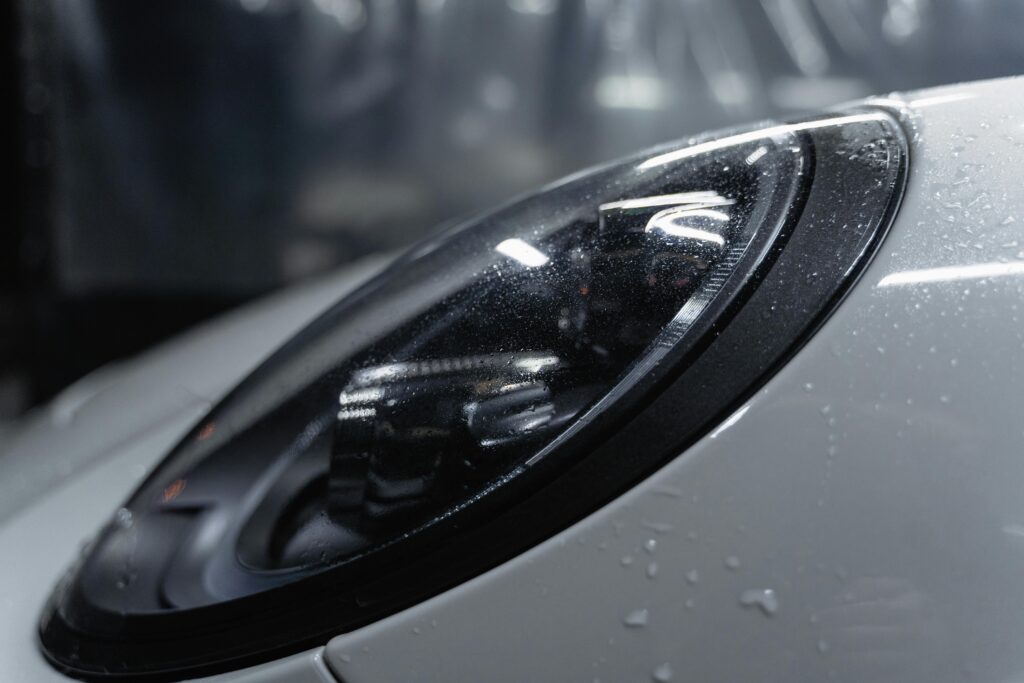
While the Quant e-Sportlimousine powered by NanoFlowcell technology represents a significant innovation in electric vehicle technology, it faces several challenges and limitations that could impact its widespread adoption and future development.
Technical and Developmental Challenges
- Complex Technology: The NanoFlowcell technology, while promising, is complex and still in the developmental stage. This complexity adds to the cost and difficulty of manufacturing and maintaining vehicles on a large scale. The need for further research to optimize these systems for everyday use remains a significant hurdle.
- Scalability: Scaling the production of such advanced technology to meet mass-market demands poses another challenge. The technology needs to be proven not only in controlled environments but also in everyday use across various conditions and geographies.
- Infrastructure Requirements: The refueling infrastructure for flow-cell technology is currently non-existent. Developing a widespread infrastructure to support the refueling of vehicles with bi-ION electrolytes, similar to conventional fueling stations, would require significant investment and time.
Market and Regulatory Hurdles
- Regulatory Approval: Gaining regulatory approval for new automotive technologies can be a lengthy and challenging process. Each component of the vehicle, from safety features to emissions standards, must meet stringent regulatory criteria before it can be approved for public road use.
- Market Acceptance: Convincing consumers to switch from well-known and widely accepted vehicle technologies to a new, relatively untested technology could pose significant challenges. Consumer skepticism and the high initial cost of new technologies can impede market acceptance.
Despite these challenges, the potential environmental benefits and technological advancements offered by the Quant e-Sportlimousine and similar vehicles provide a strong incentive for continued development. Collaborations with major partners and ongoing R&D efforts are crucial to overcoming these obstacles and paving the way for cleaner, more efficient transportation options.
Future Prospects of the Quant e-Sportlimousine and NanoFlowcell Technology
The future prospects of the Quant e-Sportlimousine and NanoFlowcell technology are expansive and multifaceted. NanoFlowcell AG is poised to transition from prototype to series production, aiming to establish flow-cell technology as a viable alternative to conventional electric drive systems. This marks a significant stride towards mainstream automotive applications. Beyond the automotive realm, the company has ambitions to integrate this technology into other sectors such as domestic energy, maritime, rail, and aviation, potentially revolutionizing how energy is utilized across various industries.
Environmental sustainability stands at the forefront of NanoFlowcell’s innovation, with their technology offering an eco-friendly alternative to traditional batteries. The bi-ION® electrolytes used are non-hazardous and boast a stable, high energy density, which could reduce the environmental impact significantly. Despite the potential, challenges such as scaling the technology for mass production and establishing the necessary infrastructure for widespread adoption remain. However, NanoFlowcell is committed to advancing these technologies through continued research and collaborations with major partners, focusing on enhancing performance and reliability for eventual market readiness.
As NanoFlowcell continues to refine their technology and expand its applications, the Quant e-Sportlimousine could spearhead a new era in sustainable transportation and energy usage, aligning with global shifts towards more environmentally responsible technologies.
Salt Water’s Role in Future Mobility
The Quant e-Sportlimousine represents a profound leap forward in sustainable transportation, powered by the innovative NanoFlowcell technology. This vehicle not only challenges the conventional norms of automotive engineering with its use of salt water as fuel but also sets a significant precedent for the future of eco-friendly transportation technologies. Its potential extends beyond mere transportation, promising applications in various sectors such as domestic energy, maritime, and aviation, truly embodying the vision of a versatile and sustainable future.
The path ahead for NanoFlowcell and the Quant e-Sportlimousine is laden with both opportunities and challenges. Scaling up for mass production, securing broader market acceptance, and establishing a supportive infrastructure are the immediate hurdles. However, the persistent advancement in research and the strategic partnerships being forged indicate a robust commitment to overcoming these challenges.
As NanoFlowcell continues to refine and promote its groundbreaking technology, the implications for global energy use and environmental impact are potentially transformative. The Quant e-Sportlimousine is not just a car; it is a beacon of possibility, illustrating that innovative engineering and environmental stewardship can go hand in hand, driving us toward a more sustainable world.
Animals
Research Reveals Widely Used Pesticide ‘Atrazine’, Is Turning Male Frogs Into Female Frogs In Just 3 years, & Has Been In Our Drinking Water For Over 30 Years

For over three decades, a widely used pesticide has quietly seeped into our drinking water and ecosystems, carrying implications far beyond its agricultural purpose. Known as atrazine, this chemical has been celebrated for its ability to boost crop yields, yet its hidden effects on the natural world and potentially human health are nothing short of alarming.
Recent research has uncovered a startling phenomenon involving atrazine’s impact on amphibians, raising profound questions about the broader consequences of this chemical in our environment. What does this mean for the delicate balance of ecosystems—and could humans also be at risk?
What Is Atrazine?
Atrazine is a synthetic herbicide belonging to the triazine class, extensively utilized in agriculture to manage broadleaf and grassy weeds. Since its introduction in 1958, it has become one of the most widely applied pesticides globally, particularly prevalent in the United States. Its primary applications include crops like corn, sorghum, and sugarcane, where it is valued for its effectiveness and cost-efficiency.
However, atrazine’s extensive use has led to significant environmental concerns. It is frequently detected as a contaminant in ground, surface, and drinking water, raising alarms about its persistence and mobility in the environment.
Beyond environmental contamination, atrazine is recognized as a potent endocrine disruptor. Research indicates that it can interfere with hormonal systems across various vertebrate classes, including fish, amphibians, reptiles, birds, and mammals. Notably, studies have shown that atrazine exposure can lead to the feminization and chemical castration of amphibians, such as frogs.
The widespread presence of atrazine in ecosystems and its potential to disrupt endocrine functions have prompted regulatory scrutiny. While the European Union banned atrazine in 2004 due to groundwater contamination concerns, it remains widely used in the United States. The U.S. Environmental Protection Agency (EPA) continues to evaluate atrazine’s safety, considering its environmental and public health implications.
Atrazine’s Effect on Frogs

Atrazine, a widely used herbicide, has been shown to cause significant endocrine disruption in amphibians, particularly frogs. Research led by Professor Tyrone B. Hayes at the University of California, Berkeley, revealed that exposure to atrazine can result in the feminization and chemical castration of male frogs.
In a controlled study, 40 male African clawed frogs (Xenopus laevis) were raised in water containing 2.5 parts per billion (ppb) of atrazine, a concentration commonly found in the environment. Over a period of three years, it was observed that approximately 75% of the exposed male frogs exhibited reduced testosterone levels and decreased fertility, effectively rendering them chemically castrated. Notably, about 10% of the male frogs developed into fully functional females capable of mating with males and producing viable eggs.
These findings suggest that atrazine disrupts normal hormonal functions by enhancing the activity of aromatase, an enzyme that converts testosterone into estrogen. This hormonal imbalance leads to the demasculinization and feminization observed in the affected frogs.
The implications of these results are profound, as amphibians are often considered indicator species, reflecting the health of their ecosystems. The ability of atrazine to induce such dramatic changes in frogs raises concerns about its potential effects on other wildlife and possibly humans. As Professor Hayes noted, “When you have studies all over the world showing problems with atrazine in every vertebrate that has been looked at… all of them can’t be wrong.”
Potential Risks to Human Health
Atrazine’s extensive use in agriculture has led to its pervasive presence in drinking water supplies, raising significant concerns about its potential impact on human health. As a known endocrine disruptor, atrazine can interfere with hormonal systems, potentially leading to various health issues.
- Endocrine Disruption and Reproductive Health: Studies have indicated that atrazine exposure may be linked to reproductive health problems in humans. Research has shown that atrazine can increase human aromatase activity, leading to elevated estrogen levels, which may disrupt normal hormonal balance. Additionally, some studies have associated atrazine exposure with low fertility, low sperm count, and poor semen quality in humans living in agricultural areas.
- Cancer Risks: There is evidence suggesting a potential association between atrazine exposure and certain cancers. For instance, a study detected an elevated risk of non-Hodgkin lymphoma for individuals who had both atrazine and nitrate in their drinking water. However, the International Agency for Research on Cancer (IARC) has classified atrazine as “not classifiable as to its carcinogenicity to humans” (Group 3), indicating that current evidence is insufficient to establish a definitive link.
- Birth Defects and Developmental Issues: Research has explored the potential connection between atrazine exposure and adverse birth outcomes. Some studies have reported associations between maternal exposure to atrazine-contaminated drinking water and increased risks of birth defects, low birth weights, and preterm births. However, findings across studies have been inconsistent, and further research is needed to confirm these associations.
- Regulatory Perspectives: The U.S. Environmental Protection Agency (EPA) has evaluated atrazine’s safety and, as of 2006, stated that “the risks associated with the pesticide residues pose a reasonable certainty of no harm.” However, ongoing research and emerging studies continue to inform regulatory assessments, and the EPA periodically reviews atrazine’s safety profile to ensure public health protection.
Environmental Impact of Atrazine

Atrazine’s extensive application in agriculture has led to its widespread presence in various environmental compartments, notably soil and water systems. This pervasive distribution has raised significant concerns regarding its ecological effects.
- Soil Health: Atrazine exhibits persistence in soil environments, which can adversely affect soil health. Its presence has been linked to alterations in microbial communities, potentially inhibiting the growth of non-target plant species. Such disruptions can lead to reduced soil fertility and diminished agricultural productivity.
- Water Contamination: Due to its moderate water solubility, atrazine readily disperses beyond its initial application sites through surface runoff, especially following rainfall events. This mobility results in the contamination of surface and groundwater resources, posing risks to aquatic ecosystems and potentially affecting human drinking water supplies.
- Aquatic Ecosystems: In aquatic environments, atrazine has been shown to modify growth, enzymatic processes, and photosynthesis in plants. It exerts mutagenic and genotoxic effects, leading to defective cell division, erroneous lipid synthesis, and hormonal imbalances in aquatic fauna and non-target animals.
- Biodiversity and Wildlife: Atrazine’s impact extends to terrestrial wildlife, particularly amphibians. Studies have demonstrated that atrazine exposure can cause demasculinization in male northern leopard frogs, even at low concentrations. This effect is indicative of atrazine’s role as an endocrine disruptor, potentially contributing to global amphibian declines.
- Regulatory Perspectives: The environmental persistence and widespread detection of atrazine have prompted regulatory scrutiny. The European Union banned atrazine in 2004 due to groundwater contamination concerns. In contrast, the United States Environmental Protection Agency (EPA) continues to evaluate atrazine’s safety, considering its environmental and public health implications.
Regulatory Actions Surrounding Atrazine
Atrazine, a herbicide widely used in agriculture, has long been a lightning rod for debates over its safety and environmental impact. Its pervasive contamination of water sources and potential health risks have led to a patchwork of regulatory responses worldwide, reflecting differing priorities and risk assessments.
The European Union took decisive action in 2004, banning atrazine outright. This bold move stemmed from mounting evidence of groundwater contamination and the chemical’s potential to harm both ecosystems and public health. The EU’s zero-tolerance policy for such risks underscores its commitment to environmental stewardship and consumer safety.
In contrast, the United States has maintained atrazine’s approval, albeit under periodic scrutiny. The Environmental Protection Agency (EPA) has wrestled with balancing its economic benefits for farmers against its environmental toll:
- 2003: The EPA controversially reapproved atrazine despite growing scientific concerns about its impact on aquatic life and hormonal disruption in animals.
- 2020: An interim review led to partial restrictions, including a ban on its use in Hawaii, Alaska, and U.S. territories, as well as the removal of roadside applications. These measures aimed to mitigate its environmental footprint while preserving its agricultural utility.
This piecemeal approach has drawn criticism from environmental advocates who argue for stronger protections and from agricultural stakeholders who value atrazine for its efficacy in weed control.
Global Regulatory Variances
Elsewhere, responses to atrazine reflect a mix of caution and adaptation:
- Australia: Restrictions on non-agricultural applications have been implemented to reduce environmental contamination, signaling a middle ground between outright bans and unrestricted use.
- Canada: Special reviews have led to reduced atrazine usage, with ongoing assessments to ensure that health and environmental protections keep pace with scientific findings.
These differing regulatory approaches highlight the complex interplay between environmental priorities, economic interests, and public health concerns, making atrazine a global case study in the challenges of chemical regulation.
How to Protect Your Family Against Pesticides and Herbicides

Given the potential health risks associated with pesticides like atrazine, it’s crucial to adopt strategies that minimize exposure. Here are some effective measures:
1. Consume Organic and Locally Grown Produce
Opting for organic and locally sourced fruits and vegetables can significantly reduce pesticide intake. Organic farming practices limit chemical usage, and local produce often involves fewer pesticides due to sustainable farming methods.
2. Filter Drinking Water
Utilizing water filtration systems, such as those employing activated carbon or reverse osmosis, can effectively remove pesticide residues, including atrazine, from drinking water. This step ensures safer consumption for your family.
3. Support Wetland Conservation
Wetlands naturally filter pollutants, including pesticides, from water sources. Engaging in and supporting wetland conservation efforts can enhance this natural filtration, leading to cleaner water supplies.
4. Implement Natural Weed Control Methods
Adopting alternatives to chemical herbicides, such as mulching, hand weeding, and cover cropping, can effectively manage weeds without introducing harmful chemicals into the environment.
5. Choose Native Plant Species for Landscaping
Landscaping with native plants reduces the need for pesticides, as these species are typically more resistant to local pests and diseases, promoting a healthier ecosystem.
6. Purchase Hormone-Free Meat Products
Selecting hormone-free meat can decrease exposure to endocrine-disrupting chemicals that may accumulate in livestock exposed to pesticides like atrazine.
7. Enhance Immune Health
Incorporating antioxidant-rich foods, such as fruits and vegetables, and probiotic-rich items like yogurt, can strengthen the immune system, aiding the body in combating potential toxins.
Atrazine: From Farmlands to Drinking Water
Atrazine’s story is one of stark contrasts—praised for its agricultural benefits while raising serious red flags for ecosystems, wildlife, and human health. Decades of scientific research reveal that this herbicide’s effects stretch far beyond weeds, disrupting the hormonal balance in amphibians and contaminating water supplies critical to human survival.
The call to action is clear: informed choices and sustainable practices can mitigate the risks associated with atrazine. By advocating for stricter regulations, supporting safer farming methods, and adopting individual protective measures, we can work towards a future where agricultural progress doesn’t come at the cost of our environment and health.
As we uncover more about atrazine and its long-term consequences, one truth remains certain—the decisions we make today will shape the health of our ecosystems and communities for generations to come.
News
Man Used Internet Registry to Track down and Beat up Pedophiles

In a story that could rival any crime drama, one man took the law into his own hands, targeting individuals listed on Alaska’s public sex offender registry. Jason Vukovich, later dubbed the “Alaskan Avenger,” became a controversial figure—revered by some as a hero and condemned by others as a dangerous vigilante. His actions were fueled by a dark and painful past, creating a whirlwind of moral dilemmas and legal consequences.
What drove him to such extremes? And what does his story reveal about justice, trauma, and society’s handling of these issues? The answers are as complex as the man himself.
The Descent into Crime
After fleeing his abusive home at 16, Jason Vukovich faced the harsh realities of survival without identification or financial support. To sustain himself, he turned to petty crimes, initiating a pattern of illegal activities that spanned multiple states, including Washington, Oregon, Idaho, Montana, and California. His offenses ranged from theft to drug possession, reflecting a life in turmoil.
In 2008, Vukovich returned to Alaska, but his criminal behavior persisted. He accumulated charges for theft, possession of controlled substances, and was accused of assaulting his then-wife, an allegation he denies.
Vukovich acknowledged that his criminal activities were a manifestation of deep-seated self-loathing stemming from his childhood abuse. He described his mindset: “My silent understanding that I was worthless, a throw away… The foundations laid in my youth never went away.”
Research supports the correlation between childhood trauma and subsequent criminal behavior. A study published in the Journal of Interpersonal Violence found that individuals who experienced childhood abuse are at a higher risk of engaging in criminal activities later in life. The study emphasizes the importance of early intervention and support to mitigate these outcomes.

The Vigilante Rampage
In June 2016, Jason Vukovich’s unresolved trauma culminated in a series of violent acts against individuals listed on Alaska’s sex offender registry. Armed with a hammer and driven by a desire for retribution, he targeted three men:
- Charles Albee: On June 25, Vukovich forced his way into Albee’s home, slapped him multiple times, and robbed him.
- Andres Barbosa: Two days later, accompanied by two women, Vukovich entered Barbosa’s residence at 4 a.m., threatened him with a hammer, punched him in the face, and stole several items, including his truck.
- Wesley Demarest: On June 29, Vukovich broke into Demarest’s home at 1 a.m., struck him in the head with a hammer, causing a skull fracture, and robbed him. During the assault, he declared, “I’m an avenging angel. I’m going to mete out justice for the people you hurt.”
These attacks left the victims with significant physical and psychological injuries. Demarest, for instance, suffered a traumatic brain injury that impaired his ability to form coherent sentences and resulted in the loss of his job.
The Legal Fallout
Following his arrest, Jason Vukovich faced significant legal repercussions for his actions. He was charged with 18 counts, including assault, robbery, burglary, and theft. In 2018, as part of a plea agreement, Vukovich pleaded guilty to first-degree attempted assault and a consolidated count of first-degree robbery. In exchange, prosecutors dismissed over a dozen other charges.
Superior Court Judge Erin Marston sentenced Vukovich to 28 years in prison, with five years suspended and an additional five years on probation. During sentencing, Judge Marston emphasized, “Vigilantism is not something that we accept in America… It’s not something that we accept in this community and it is just simply something that will not be tolerated.”
In 2020, Vukovich appealed his sentence, arguing that his post-traumatic stress disorder (PTSD) should be considered a mitigating factor. However, the appeal was denied, with the court maintaining that his actions could not be excused by his mental health condition.
The case sparked public debate, with some viewing Vukovich as a vigilante hero, while others condemned his actions as unlawful and dangerous. Legal experts and victim advocates highlighted the risks of taking the law into one’s own hands, emphasizing the importance of due process and the potential for unintended consequences in acts of vigilantism.
Vukovich’s Reflections
In the aftermath of his actions, Jason Vukovich expressed deep remorse and sought to convey a cautionary message to others. In a letter to the Anchorage Daily News, he reflected on his past, stating, “I began my life sentence many, many years ago; it was handed down to me by an ignorant, hateful, poor substitute for a father.”
Vukovich urged individuals who have suffered similar traumas to seek healing through constructive means rather than resorting to violence. He wrote, “If you have already lost your youth, like me, due to a child abuser, please do not throw away your present and your future by committing acts of violence.”
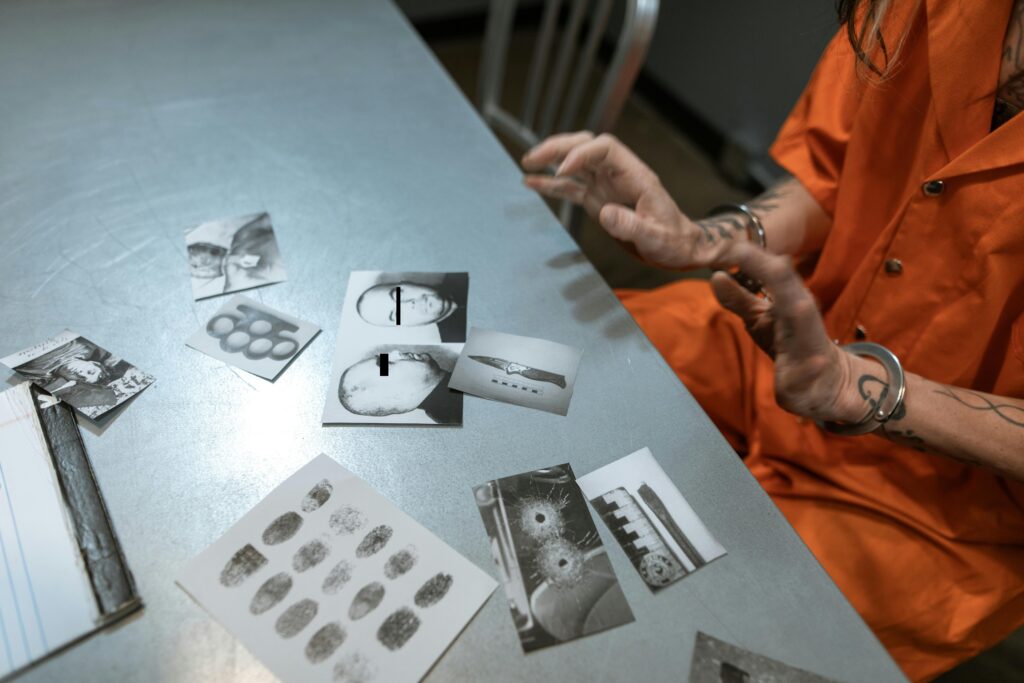
The Bigger Picture: Debate Over Sex Offender Registries
Jason Vukovich’s story has stirred up heated debates about sex offender registries and whether they really serve their purpose—or if they come with more baggage than benefits. Sure, these registries were meant to keep communities safe by providing information about convicted offenders, but have you ever wondered if they actually deliver on that promise?
The evidence? Well, it’s complicated. Research on the effectiveness of these registries in preventing repeat offenses is all over the map. One study looked at 25 years of data on Sex Offender Registration and Notification (SORN) policies and found mixed results. In some cases, the impact on reducing repeat offenses was slim to none. Doesn’t that make you question if we’re focusing on the right solutions?
And then there’s the darker side—what happens when these registries fall into the wrong hands? Take Vukovich, for example. He used the registry as a hit list, targeting individuals he believed deserved his version of justice. This isn’t an isolated issue. Stories like his remind us how easily public access to sensitive information can fuel vigilantism, creating more problems than it solves.
But the challenges don’t stop there. Imagine trying to rebuild your life with a giant label hanging over your head. For many offenders, being listed on a registry makes finding a job or a place to live nearly impossible. That kind of stigma doesn’t just hurt them—it might even make them more likely to reoffend. Critics argue we’ve got to ask ourselves: is the current system really protecting communities, or is it setting people up for failure?
So, where do we go from here? Some say we need to rethink the whole setup with tiered registries that separate low-level offenders from those who pose a real danger. Others push for more resources to help offenders reintegrate into society. Whatever the solution, one thing’s clear: it’s time for an honest conversation about what’s working—and what isn’t. What do you think?
A Cycle of Trauma and Justice
Jason Vukovich’s story is a complex intersection of pain, justice, and unintended consequences. While his actions were driven by a desire to confront the shadows of his own traumatic past, they ultimately perpetuated cycles of violence that affected his victims, himself, and society as a whole. His journey underscores the importance of addressing trauma through constructive and lawful means rather than resorting to acts of retribution.
This case also highlights the broader societal challenges associated with public sex offender registries, the long-term effects of childhood abuse, and the necessity of accessible mental health support. Jason’s own reflections emphasize that healing and justice must go hand-in-hand, fostering change without creating new harm.
For society, Jason Vukovich’s story serves as a sobering reminder of how untreated trauma and systemic shortcomings can lead to tragic outcomes. Addressing these issues proactively can help prevent similar stories and create pathways for true recovery and rehabilitation.
Science & Tech
Heat Is Radiating From A Huge Mass Under The Moon

The Moon, often seen as a cold and lifeless neighbor, holds secrets that continue to intrigue scientists and stargazers alike. Its surface, marked by craters and barren plains, hints little of the mysteries beneath. But recent discoveries have revealed something extraordinary: a massive heat-emitting feature buried deep within the lunar crust.
This enigmatic finding, hidden beneath the Moon’s far side, defies expectations. It involves a rare material, typically associated with Earth, and raises fascinating questions about the Moon’s past. What could cause such heat on a body long thought to be geologically dormant? And what does this mean for our understanding of the Moon—and perhaps even other planets?
Uncovering Lunar Heat
In a groundbreaking revelation, scientists have identified a substantial heat-emitting granite mass beneath the Moon’s surface, specifically near the Compton and Belkovich craters on its far side. This discovery was made possible through data collected by both Chinese and American lunar orbiters, which utilized microwave frequency observations to detect subsurface temperatures.
Dr. Matt Siegler of the Planetary Science Institute explained, “Using an instrument looking at microwave wavelengths – longer than infrared – sent to the Moon on both the Chinese Chang’E 1 and 2 orbiters, we have been able to map temperatures below the surface. What we found was that one of these suspected volcanoes, known as Compton-Belkovich, was absolutely glowing at microwave wavelengths.”
The data revealed a silicon-rich surface feature approximately 20 kilometers wide, believed to be the caldera of an ancient volcano. This area exhibited temperatures about 10°C warmer than its surroundings. Notably, this heat is not due to current volcanic activity, as the last eruption occurred around 3.5 billion years ago. Instead, the heat emanates from radioactive elements trapped within the granite mass. Dr. Siegler noted, “We interpret this heat flux as resulting from a radiogenic-rich granite body below the caldera.”
This finding is significant because granite formation typically requires water and plate tectonics—conditions absent on the Moon. The presence of such a large granite deposit suggests that the Moon’s geological history may be more complex than previously understood. Dr. Siegler remarked, “If you don’t have water, it takes extreme situations to make granite. So, here’s this system with no water, and no plate tectonics—but you have granite.”
The discovery was detailed in a study published in the journal Nature. The research team utilized microwave frequency data to measure heat below the surface of the Compton-Belkovich volcanic complex, leading to the identification of the granite mass.
What Makes Granite Unique?

Granite is a coarse-grained igneous rock predominantly composed of quartz, feldspar, and mica. On Earth, its formation is closely linked to the presence of water and the dynamic processes of plate tectonics. These conditions facilitate the melting of the Earth’s crust, leading to the creation of large magma bodies that cool slowly beneath the surface, crystallizing into granite.
The discovery of a substantial granite mass beneath the Moon’s surface is particularly intriguing because the Moon lacks both water and active plate tectonics—key elements in granite formation on Earth. This raises compelling questions about the geological processes that could have led to the formation of granite in such an environment.
The presence of granite on the Moon suggests that alternative mechanisms may be at play. One possibility is that the Moon’s interior experienced localized heating events, potentially from radioactive decay, leading to partial melting and the formation of granite. This hypothesis is supported by the detection of heat emanating from the granite mass, attributed to radioactive elements trapped within the rock.
The Cause of the Glow

The unexpected heat emanating from the granite mass beneath the Moon’s surface is primarily due to radioactive decay within the rock. Granite is known to contain higher concentrations of radioactive elements such as uranium and thorium compared to other rocks. As these elements decay, they release heat—a process known as radiogenic heating. This phenomenon is well-documented on Earth, where the decay of radioactive isotopes contributes to the planet’s internal heat budget.
In the context of the Moon, the detection of a heat anomaly beneath the Compton-Belkovich volcanic complex suggests the presence of a radiogenic-rich granite body. Dr. Siegler explained, “We interpret this heat flux as resulting from a radiogenic-rich granite body below the caldera.”
The presence of such a heat source indicates that the Moon’s interior once contained sufficient radioactive material to sustain prolonged volcanic activity. This challenges previous assumptions about the Moon’s thermal evolution and suggests that its interior was more geologically active than previously thought.

What It Means for Future Exploration
The discovery of a substantial granite mass beneath the Moon’s surface, particularly in the Compton-Belkovich region, has great implications for future lunar exploration. This finding challenges existing theories about the Moon’s geological processes and suggests that its interior may have been more complex and dynamic than previously thought.
Granite formation typically requires specific conditions, such as the presence of water and plate tectonics—factors absent on the Moon. The presence of granite indicates that the Moon’s crust may have undergone processes leading to the differentiation and evolution of its interior, resulting in the formation of silica-rich rocks. This challenges the traditional view of the Moon as a geologically inactive body and opens new avenues for research into its thermal and magmatic history.
Understanding the Moon’s geological history is crucial for future exploration missions. Identifying areas with unique geological features, such as the granite mass beneath Compton-Belkovich, can help prioritize landing sites for robotic and human missions. These sites may offer valuable insights into the Moon’s evolution and provide access to resources that could support sustained lunar exploration.
Moreover, the detection of heat emanating from the granite mass, attributed to radioactive decay, suggests that the Moon’s interior contained sufficient radioactive elements to sustain prolonged volcanic activity. This finding aligns with the hypothesis that the Moon experienced a complex volcanic history, with localized heating events leading to the formation of diverse rock types.
A New Chapter in Lunar Exploration
This discovery of a heat-emitting granite mass beneath the Moon’s surface is not just a scientific curiosity—it’s a paradigm shift in our understanding of the Moon’s geological history. It challenges previous assumptions about the Moon’s evolution, revealing a dynamic and complex interior far removed from the barren and inert image we once had.
Beyond its scientific intrigue, this finding holds significant implications for the future of lunar exploration. It highlights the Moon as a repository of untapped mysteries and resources, offering opportunities for new missions to probe deeper into its geological secrets. By understanding these processes, we can better prioritize landing sites, refine exploration strategies, and expand our search for similar features across other rocky bodies in the solar system.
As we look to the future, this discovery reminds us that even familiar celestial neighbors can surprise us with their hidden depths. Each revelation on the Moon brings us closer to unraveling the broader mysteries of planetary formation and evolution, reinforcing why space exploration remains as vital as ever. The Moon, it seems, has much more to teach us.
Science & Tech
Could Time Travel Actually Be Real? Scientists Weigh in on New Findings
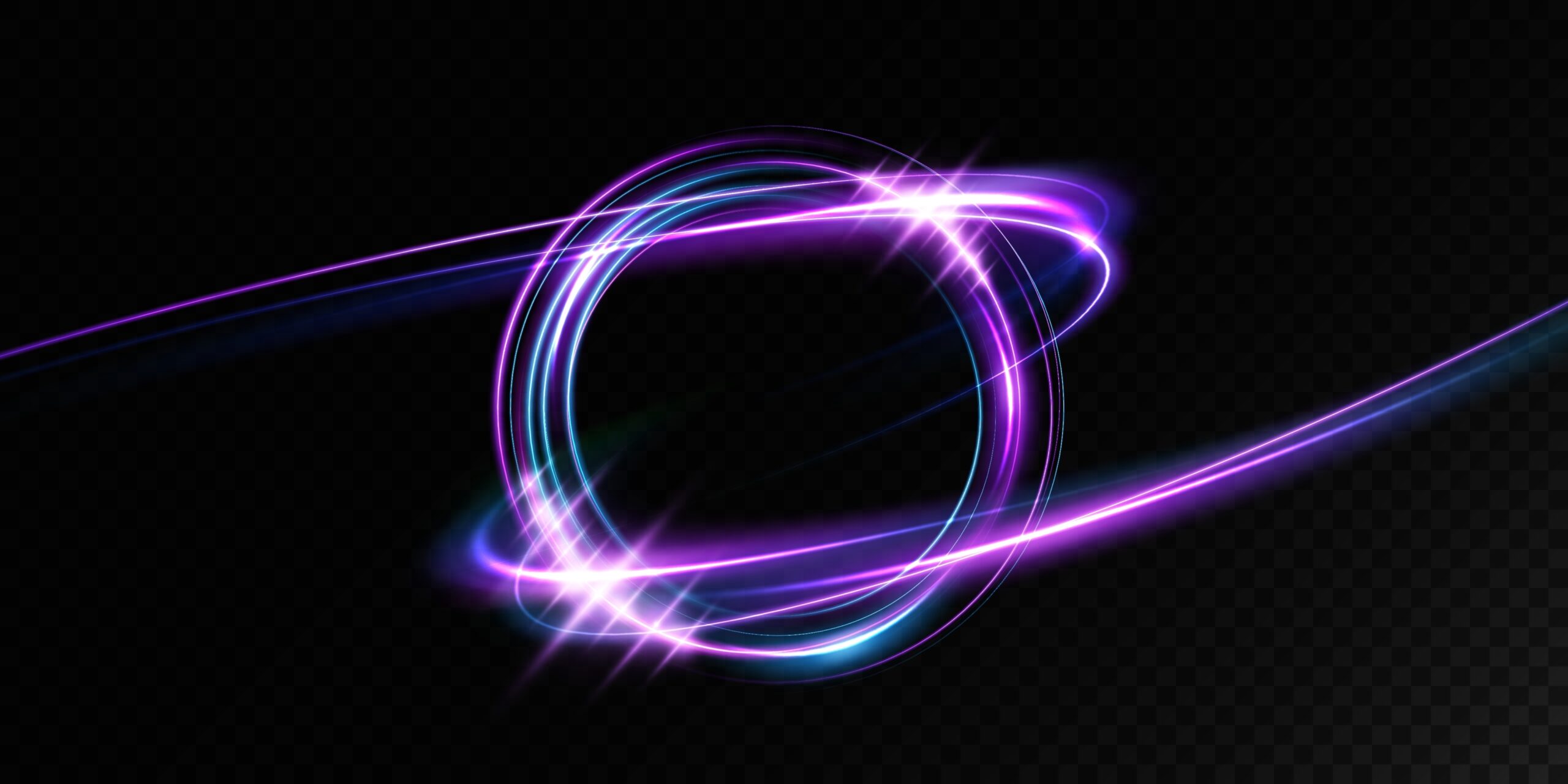
Time travel—just saying it brings up wild images, right? Zipping ahead to see what the future holds or jumping back to witness history firsthand. It’s a concept we’ve seen a hundred times in movies and TV shows, from Back to the Future to Doctor Who. But here’s a question worth asking: what if time travel isn’t just make-believe?
Surprisingly, scientists are starting to think that time travel could actually have some basis in reality. With recent discoveries, we’re learning things about time and space that we never saw coming, and suddenly, the idea of time travel isn’t sounding quite as crazy. Now, we’re not building any DeLoreans yet, but researchers are definitely exploring ideas that bring us closer than ever to making it real.
So, let’s look at some of these mind-bending theories and the latest discoveries that are bringing science and science fiction closer together. From real-life examples of time moving slower in space to the bizarre possibilities of wormholes, these breakthroughs might just be nudging us a little closer to understanding what it would really take to travel through time. Who knows? The future of time travel might be closer than any of us expected.
How Einstein’s Ideas Are Proving True
Einstein’s theory of relativity completely changed how we think about time. Instead of being some unchanging force, he showed us that time actually bends and stretches, depending on things like speed and gravity. This idea of time as a “flexible dimension” is what opened the door for time travel theories in the first place.
And here’s where things get really interesting: recent experiments keep proving Einstein right. Scientists have tested this with atomic clocks on high-speed planes and satellites, where clocks actually tick more slowly when they’re closer to strong gravitational fields or moving faster. This is what we call time dilation, and it’s a real phenomenon that we see every day in things like GPS satellites. Without regular adjustments, their clocks would drift off, making navigation inaccurate.
So, why does this matter for time travel? These experiments are real-world evidence that time isn’t as rigid as we might think. If time can be stretched and compressed, then maybe—just maybe—we’re onto something that could someday allow us to experience time differently, possibly even traveling through it.
Time Dilation and Forward Time Travel: Real Science, Real Possibilities

Imagine you’re moving so fast that time itself slows down for you. Sounds like something out of sci-fi, right? But this isn’t just movie magic—scientists call it time dilation, and it’s been proven to be very real.
One of the most famous examples is astronaut Scott Kelly’s year-long mission on the International Space Station. Since he was zipping around Earth at over 17,000 miles per hour, time actually moved a little slower for him than for his twin brother, Mark, who stayed on Earth. When Scott returned, he was just a tiny bit younger than he would’ve been if he’d stayed here with us. It’s a small effect, but it’s real proof that speed affects how we experience time.
And it doesn’t just happen with astronauts. Even GPS satellites, which orbit the Earth at high speeds and farther from gravity’s pull, experience time a bit differently. Their clocks need constant adjustments to stay in sync with our time down here; otherwise, GPS would start giving us inaccurate locations in no time.
So what does all this mean for time travel? Well, it shows us that moving into the future—at least in some way—is possible. The faster you go, the slower time passes for you. If we could one day reach close-to-light speeds, we’d experience time in slow motion, making it possible to “jump” years into the future while only moments pass for us. It’s a massive challenge, but studies like these make the idea feel a little more real and a little less like fantasy.
Rewinding Time: Can We Really Go Back?

If moving forward in time is possible, could we ever go back? This is where things get a lot messier—and way more theoretical. While traveling into the future has some solid science behind it, trying to go back in time is a whole different challenge, and the theories here get pretty wild.
One idea scientists have thrown around is something called “closed time-like curves.” Picture a path in space-time that loops back to an earlier point, basically letting you end up in your own past. Sounds crazy, right? But theoretically, with an intense gravitational field—like the kind created by a black hole or a hypothetical cosmic string—something like this could maybe happen. Cosmic strings, by the way, are these ultra-dense “threads” that scientists think might be left over from the early universe. If two of them somehow passed each other at nearly the speed of light, they could create a loop in time. But there’s a catch: the conditions needed to pull this off are so extreme that they’re way out of reach for us right now.
And then there’s the famous “grandfather paradox.” Imagine you go back in time and accidentally prevent your grandparents from meeting. If that happens, how would you ever be born to go back in time in the first place? It’s a classic problem, and it’s one of the biggest reasons backward time travel feels like such a long shot. Some scientists think there might be ways around it, though—like parallel timelines where your actions in the past create a separate reality, or “self-healing” universes where the timeline automatically adjusts to avoid contradictions.
So, for now, going back in time is still mostly in the “what if” stage. But even these far-out theories push the boundaries of physics and keep scientists exploring what might one day be possible, even if a real-life time machine isn’t around the corner just yet.
Wormholes and Quantum Mechanics – Potential Pathways to the Past?

Wormholes have become another favorite in the time travel discussion. In theory, a wormhole could act as a tunnel connecting two distant points in space-time, potentially allowing travelers to move quickly between them. If one end of the wormhole were placed near a massive gravitational field, like a black hole, time dilation could create a time difference between the two ends. However, wormholes remain speculative, with no concrete evidence of their existence, and they would likely collapse under their own gravity before anyone could use them.
Quantum mechanics introduces another layer of mystery with its phenomena, like non-locality or “spooky action at a distance.” When two particles are entangled, a change in one particle’s state can instantly affect the other, regardless of distance. This phenomenon has led to concepts like retrocausality, where events in the future might influence the past on a quantum level. However, this “effect” occurs on subatomic scales, and expanding it to macroscopic objects, let alone humans, is a leap scientists have yet to take.
Even if retrocausality does exist, it may not mean time travel in the traditional sense. For one, quantum events do not directly impact the macroscopic world as neatly as they do on a subatomic level. Secondly, any information sent back in time would likely be “hidden” by the mechanisms of the universe, so we couldn’t make practical use of it. Quantum mechanics and relativity continue to inspire endless debate, but turning these theories into a usable time machine may forever remain science fiction.
The Future of Time Travel: Where Science Meets Possibility
So, where does all this leave us? We’re still pretty far from hopping into a time machine, but science is starting to show that maybe it’s not entirely out of reach. We know now that time doesn’t tick the same for everyone—thanks to things like time dilation—and theories about wormholes, quantum entanglement, and time loops are making us rethink what’s possible. Sure, a lot of this is still just theory, but it’s enough to keep scientists digging.
The real breakthrough might come if we can figure out a “Theory of Everything”—something that finally links gravity (which controls big things like stars) with quantum mechanics (which explains tiny particles). If scientists can crack that code, we might unlock some big secrets about time, maybe even enough to make time travel real.
For now, time travel is still a dream. But with every discovery, that dream feels a little less like science fiction and a little more like something we might actually pull off one day. Until then, the mystery of time itself is more than enough to keep us all wondering.
Sources:
Magazine Editor & Magazine Editor. (2023, November 13). Is time travel even possible? An astrophysicist explains the science behind the science fiction. UMBC: https://umbc.edu/stories/science-behind-potential-for-time-travel/
Is time travel possible? | NASA Space Place – NASA Science for Kids. (n.d.). https://spaceplace.nasa.gov/time-travel/en/
News
Top 5 Unsolved Mysteries in the Scientific Community

Despite all we’ve learned through science, certain mysteries remain stubbornly unsolved, almost as if they’re daring us to uncover them. How can something that makes up most of the universe remain invisible to us? Why do we experience consciousness, that sense of awareness that feels so close yet is so hard to explain? And what will ultimately become of the universe we inhabit? Questions like these remind us that, while we’ve come a long way, there are still vast frontiers waiting to be explored.
In this article, we’ll dive into three of the most intriguing mysteries that science has yet to fully explain: dark matter, consciousness, and the fate of the universe. These puzzles not only push the boundaries of what we know but also challenge us to think beyond the visible and tangible. Each of them stands as a reminder that the unknown can inspire us just as much as what we already understand.
The Elusive Nature of Dark Matter
Imagine something that makes up nearly all of the universe—about 85% of it, to be exact—but we can’t see it, touch it, or directly detect it. That’s dark matter. It’s this invisible “stuff” that scientists know is there because of how it tugs on galaxies and holds everything together. Without it, galaxies would just fall apart. But even though we know it exists, we’re still left scratching our heads about what dark matter actually is.
Scientists have spent years trying to explain this mystery. Some think dark matter is made of particles called WIMPs (Weakly Interacting Massive Particles). These particles are so elusive they just slip through everything else without leaving a trace. Others suggest we might need to rethink gravity itself, especially on the massive scale of the universe, to account for what we’re seeing.
Even with all the advanced technology we have—giant detectors, powerful telescopes—dark matter keeps its secrets. Figuring it out wouldn’t just check a box; it could totally change how we see the universe and even give us clues about what the future holds for everything around us. For now, dark matter is like a cosmic secret, reminding us that we’re still in the early chapters of understanding the universe.
Exploring the Twilight Zone of the Ocean
While space often captures the imagination when it comes to exploration, Earth’s oceans hold mysteries just as profound. One such mystery lies within the ocean’s “twilight zone,” a layer of water between 200 and 1,000 meters below the surface where sunlight fades, creating an environment that is barely explored. This shadowy region is home to countless unknown species, some of which may play crucial roles in maintaining Earth’s climate by cycling carbon and regulating nutrients.
The creatures that dwell in the twilight zone exhibit unique adaptations for survival in an environment with scarce light and food. Some species use bioluminescence to attract prey or confuse predators, creating a mesmerizing light show in the depths of the ocean. Scientists believe that the biomass in this zone may exceed that of all other oceanic layers combined, an ecological treasure that could offer new resources and insights into marine biology. However, studying this zone comes with significant challenges, as the technology needed to operate at such depths is expensive and complex.
The twilight zone presents a range of challenges for researchers. Unlike the surface or deeper ocean zones that have been extensively studied, this region is difficult to access and observe. Recent advancements in remote-controlled submarines and underwater technology have begun to shed light on this mysterious realm, but much remains unknown. Scientists speculate that this layer holds vast fish populations with potential impacts on global fisheries and food security. These ecosystems are delicate and could be affected by overfishing, climate change, and pollution, making the need to understand them even more urgent.

The Rise and Fall of Venus
Our neighboring planet Venus presents another gripping mystery: why did it transform into a fiery wasteland, while Earth flourished with life? Venus and Earth are often called “sister planets” due to their similar size, composition, and distance from the sun. However, where Earth developed conditions suitable for life, Venus turned into an inhospitable inferno with surface temperatures hot enough to melt lead and an atmosphere thick with carbon dioxide.
Theorists have long debated how such a close twin could follow such a divergent path. Some believe that Venus once had oceans and a temperate climate, but that a catastrophic greenhouse effect, potentially triggered by volcanic eruptions, led to its demise. Others suggest that solar winds may have stripped away any early water, preventing the development of an Earth-like environment. These hypotheses fuel a growing interest in studying Venus further, with upcoming missions by NASA and other space agencies aimed at uncovering more of its secrets.
Scientists believe Venus may have once harbored oceans, but something triggered a dramatic climate shift, resulting in its current harsh conditions. Understanding Venus’s transformation could provide insights into the forces that stabilize climates on rocky planets and offer warnings about potential climate scenarios on Earth. As researchers gear up for future missions to Venus, they hope to uncover evidence of its watery past and learn whether Earth’s “sister” ever had conditions similar to ours. Exploring Venus may one day help us protect our planet from a similar fate.
The Unknown Future of Animal Evolution
While much of evolution’s past is mapped through fossils and genetics, predicting the future of evolution is a challenging task. Human activities such as urbanization, pollution, and climate change have dramatically altered the planet’s ecosystems, prompting scientists to wonder: how will animals adapt to these changes over the coming millennia?
Experts predict that future evolutionary adaptations may favor animals that can thrive in human-altered environments. For example, some urban species might evolve smaller body sizes, enabling them to maneuver in confined spaces, or develop nocturnal habits to avoid human disturbances. On a larger scale, marine life may adapt to warmer and more acidic oceans, while land animals may evolve to endure pollution and habitat loss. These speculative projections underscore the resilience of life, but they also serve as reminders of humanity’s profound impact on Earth’s biodiversity.
Biologists propose several possibilities for the future of animal evolution. Some predict that animals will develop traits allowing them to thrive in human-dominated landscapes, such as resilience to pollutants or a reliance on urban food sources. This evolutionary guessing game highlights the resilience of life on Earth, yet it also raises ethical and environmental concerns. How we choose to manage natural habitats and combat climate change today will shape the paths that evolution takes, impacting not only future species but also the balance of Earth’s ecosystems. The future of animal evolution is one of the most dynamic mysteries, pointing to both nature’s adaptability and humanity’s influence on the natural world.

Consciousness: The Mind’s Greatest Mystery
Perhaps the most profound mystery lies within our own minds: the nature of human consciousness. Despite extensive research, scientists and philosophers alike remain puzzled by the origins and mechanisms of consciousness. While we understand some brain functions, such as memory and perception, consciousness itself—the experience of being aware—is still beyond full comprehension.
Some scientists believe that understanding consciousness may require a paradigm shift in how we view the mind and brain. Emerging theories suggest that consciousness might not be confined to human beings but could be a fundamental property of the universe, as essential as gravity or electromagnetism. Meanwhile, advanced neuroimaging tools are enabling researchers to observe brain patterns associated with conscious thought, but these studies have yet to answer why or how subjective experiences arise from physical processes.
Research into consciousness often falls into two camps: physicalist theories that explain consciousness as a product of neural activity, and dualist theories that suggest it may involve non-material elements. Scientists use technologies like fMRI and EEG to map brain activity, revealing patterns associated with awareness. Yet, no theory has definitively answered how these patterns translate into the experience of consciousness. Understanding this enigma could revolutionize fields ranging from artificial intelligence to mental health, shedding light on the mind’s depths and the very essence of what it means to be human. Consciousness remains a frontier of both scientific and philosophical exploration, bridging the tangible with the intangible.
The Universe’s Fate: How Will It End?
The universe had a beginning, so it makes sense to wonder—how’s it all going to end? It’s one of those questions that feels almost impossible to wrap our heads around, but scientists are trying. They’ve come up with a few big theories, each as mind-bending as the last.
One idea is the “Big Freeze.” In this scenario, the universe just keeps expanding, with everything drifting farther and farther apart until, eventually, it all goes cold and dark—no more stars, no more heat, just emptiness. Another possibility is the “Big Crunch,” where, instead of expanding forever, the universe could start pulling back on itself, ending up as one super-dense, hot point again. And then there’s the “Big Rip,” which sounds like the wildest one: if the universe keeps expanding faster and faster, it could eventually tear galaxies, stars, and even atoms apart. Talk about an intense finale.
What makes this tricky is that so much of it depends on dark matter and dark energy, two forces we don’t fully understand. Dark matter holds things together, while dark energy is pushing the universe to expand. Figuring out what these mysterious forces actually are could give us some real clues about where the universe is headed. But until then, we’re left with some pretty epic guesses—and a whole lot of mystery.
Embracing the Unknown: The Quest for Answers

When you think about these big mysteries—dark matter, consciousness, and what might happen to the universe—it’s pretty mind-blowing. There’s so much we still don’t understand! But maybe that’s what makes it all so interesting. These aren’t just questions with easy answers; they’re like doors that open into even bigger questions.
Every time scientists make a discovery, it feels like they’re getting closer, but somehow, new questions pop up. And that’s kind of the beauty of it. Science isn’t always about finding all the answers right away. It’s about exploring, learning, and just being curious about everything we don’t know yet.
So, who knows where this will all lead? Maybe we’ll solve some of these mysteries, or maybe we’ll just keep finding more things to wonder about. Either way, the adventure of figuring it out is what makes it all worth it.
Sources:
- Deep-sea discovery shines light on life in the twilight zone. (2024, September 24). ScienceDaily. https://www.sciencedaily.com/releases/2024/09/240925123650.htm#:~:text=The%20ocean’s%20twilight%20zone%20is,growth%20of%20bacteria%20is%20restricted.
- Paulson, S., Chalmers, D., Kahneman, D., Santos, L., & Schiff, N. (2013). The thinking ape: the enigma of human consciousness. Annals of the New York Academy of Sciences, 1303(1), 4–24. https://doi.org/10.1111/nyas.12165
Health
Are We Really Addicted to Our Phones? The Psychology Behind Digital Dependence

In today’s digital world, smartphones have transformed from mere gadgets into essential lifelines. They keep us connected, informed, and entertained, serving as our gateway to almost everything—from instant communication and endless information to a virtual space that feels like home. But as these devices nestle deeper into our daily lives, a growing question arises: When does helpful convenience cross into unhealthy attachment?
Phone addiction is more than a buzzword; it’s a reality for millions who find themselves checking their screens constantly, craving notifications, and feeling anxious without their devices. Could the device that connects us to the world be isolating us from it at the same time? In this article, we’ll explore the surprising psychology behind our digital dependency, the signs it may be affecting us, and practical ways to regain balance.
What Is Phone Addiction and Why Does It Happen?
Phone addiction, often referred to as “nomophobia” (the fear of being without a mobile phone), is characterized by excessive and compulsive use of smartphones, leading to significant interference with daily life, relationships, and responsibilities. This behavioral addiction shares similarities with other compulsive behaviors, such as gambling, where individuals experience a loss of control over their actions despite negative consequences.
The underlying mechanism of phone addiction is closely linked to the brain’s reward system, particularly the neurotransmitter dopamine. Dopamine plays a crucial role in motivating behavior by providing pleasurable sensations when we engage in rewarding activities. Smartphone use, especially interactions on social media, triggers the release of dopamine, reinforcing the behavior and creating a cycle of craving and reward. As noted by psychiatrist Anna Lembke, “That’s the hallmark of an addictive drug. It just intrinsically draws people in.”
Research has shown that notifications and social interactions via smartphones activate the brain’s reward pathways, leading to repeated engagement. A study published in the journal Frontiers in Psychiatry highlights that problematic cell-phone use has been associated with personality variables such as extraversion, neuroticism, and impulsivity, as well as psychiatric comorbidities like anxiety and depression.
The design of smartphones and applications also contributes to their addictive potential. Features like infinite scrolling and variable rewards are intentionally implemented to keep users engaged. Tristan Harris, a former Google design ethicist, pointed out that “services like Facebook and YouTube leverage our attention and engagement to sell ads or otherwise attract funding. It’s happening not by accident, but by design.”
Recognizing the Signs of Problematic Phone Use

Recognizing the signs of problematic phone use is essential for understanding and addressing potential addiction. Individuals may experience a range of symptoms, including:
- Preoccupation with the phone: Constantly thinking about or using the device, even during important tasks.
- Anxiety without access: Feeling anxious or disoriented when the phone is not nearby.
- Excessive use: Spending an inordinate amount of time on the phone, often at the expense of other activities.
- Negative emotions upon restriction: Experiencing irritability or distress when phone usage is limited.
These behaviors can lead to significant disruptions in daily life, affecting personal relationships, work, and overall well-being. A study published in BMC Psychiatry found that approximately 23% of children and young people exhibited problematic smartphone use, which was associated with increased odds of depression, anxiety, and poor sleep quality.
Additionally, the phenomenon of “ringxiety”—the false sensation of hearing a phone ring or feeling it vibrate when it hasn’t—has been identified as a symptom of phone addiction.
Impact of Phone Addiction on Daily Life

Excessive smartphone use, often termed “phone addiction,” can significantly disrupt various aspects of daily life. Research indicates that individuals with problematic smartphone use may experience increased social isolation, diminished self-confidence, and heightened levels of depression and anxiety.
A study published in Frontiers in Psychiatry found that problematic smartphone use is negatively associated with young adults’ psychosocial well-being, with time spent using smartphones influencing mental health.
The pervasive nature of smartphones can lead to constant distractions, adversely affecting productivity and concentration. This constant connectivity often results in sleep disturbances, as individuals may find it challenging to disconnect from their devices, leading to poor sleep quality and associated health issues.
Physical health is also at risk; prolonged smartphone use can cause eye strain, headaches, and musculoskeletal problems due to poor posture. Moreover, the overuse of smartphones can interfere with personal relationships, as face-to-face interactions may be neglected in favor of virtual communication, leading to weakened social bonds and increased feelings of loneliness.
In severe cases, phone addiction has been linked to more serious mental health concerns. A longitudinal study published in BMC Public Health found that mobile phone addiction during the COVID-19 quarantine period could directly predict suicidality in adolescents within the subsequent five months, even after controlling for depression and daytime sleepiness.
When to Seek Professional Help
Recognizing when to seek professional help for phone addiction is crucial, especially when self-regulation efforts prove insufficient. If excessive phone use significantly disrupts daily life, relationships, or mental health, consulting a mental health professional is advisable. Therapies such as Cognitive Behavioral Therapy (CBT) have shown effectiveness in addressing behavioral addictions, including phone addiction. CBT helps individuals identify and modify negative thought patterns and behaviors associated with excessive phone use.
Additionally, support groups like Internet and Tech Addiction Anonymous offer communal support and shared experiences, which can be beneficial in overcoming phone addiction.
Recognizing the need for professional assistance is a proactive step toward regaining control and fostering a healthier relationship with technology.
Reconnect with Life: Simple Steps to Break Free from Your Phone

Excessive smartphone use can disrupt daily life, affecting productivity, relationships, and mental well-being. To regain control over your phone usage, consider implementing the following strategies:
1. Set Clear Boundaries
Establish specific times and places where phone use is limited or prohibited. For instance, designate the dinner table or bedroom as phone-free zones to encourage face-to-face interactions and improve sleep quality.
2. Monitor and Limit Screen Time
Utilize built-in features or third-party apps to track your screen time. Setting daily limits for app usage can help you become more aware of your habits and reduce unnecessary phone use.
3. Turn Off Non-Essential Notifications
Disable notifications for apps that are not crucial. This reduces distractions and the compulsion to check your phone frequently. By minimizing interruptions, you can focus better on tasks at hand.
4. Engage in Offline Activities
Rediscover hobbies and activities that don’t involve screens, such as reading, exercising, or spending time outdoors. Engaging in offline pursuits can provide fulfillment and reduce the urge to reach for your phone out of boredom.
5. Implement the Pomodoro Technique
Adopt time management methods like the Pomodoro Technique, which involves working for a set period (e.g., 25 minutes) followed by a short break. This structure can help you stay focused and reduce the temptation to check your phone during work sessions.
6. Utilize Digital Well-being Tools
Many smartphones offer features that monitor and limit usage. For example, Apple’s Screen Time and Android’s Digital Wellbeing provide insights into your habits and allow you to set restrictions on app usage.
7. Seek Professional Support if Needed
If self-imposed measures aren’t effective, consider seeking help from a mental health professional. Therapies such as cognitive-behavioral therapy (CBT) have been shown to assist individuals in managing and overcoming behavioral addictions, including problematic phone use.
Reclaiming Control Over Technology
Breaking free from phone addiction is not merely about cutting down screen time; it’s about reclaiming control over your attention, time, and overall well-being. Recognizing the signs of problematic phone use and understanding its impact on your daily life are crucial steps toward change. By implementing practical strategies—like setting boundaries, engaging in offline activities, and seeking professional help when needed—you can foster a healthier relationship with your smartphone.
Remember, technology is a tool designed to enhance our lives, not control them. By taking conscious steps to manage your phone usage, you’re investing in better mental health, stronger relationships, and a more mindful existence. It’s about finding balance in a digitally connected world and ensuring that you’re present for the moments that truly matter.
News
How Automation Could Change the Workforce Forever: What We’re Not Prepared For

In recent years, artificial intelligence has surged beyond its experimental origins, embedding itself in daily operations across industries and changing the way we work in ways we could hardly have imagined a decade ago. Once the stuff of science fiction, AI is now a force powerful enough to redefine tasks, create new opportunities, and even spark concerns about the stability of certain careers. Predictions of AI-driven automation impacting millions of jobs have created a mix of excitement and apprehension, leaving workers and business leaders wondering: What lies ahead in the evolving relationship between AI and the workplace?
From automating repetitive tasks to tackling challenges on a scale beyond human capacity, AI’s role in shaping our future is just beginning to unfold. While some industries have been quick to embrace AI’s potential, others are still finding their footing. But one thing is clear—those who understand how to harness AI’s power effectively may stand to gain the most. In this article, we’ll journey through AI’s transformative impact on the workplace, uncovering the opportunities, challenges, and the steps businesses can take to navigate an AI-driven future.
AI’s Transformative Impact on Industries

Artificial intelligence (AI) is revolutionizing industries worldwide, reshaping operations, and redefining roles across various sectors. A 2023 report by Goldman Sachs highlights that AI-driven automation could disrupt up to 300 million jobs globally, with office and administrative support, legal work, and architecture and engineering in the U.S. facing significant risks.
The finance industry leads in AI adoption, utilizing algorithms for real-time data analysis to detect fraud and market fluctuations, thereby transforming risk management.
Manufacturing and technology sectors also exhibit high AI usage among executives, at 80% and 64% respectively, indicating a pronounced impact in these fields. Conversely, construction and finance sectors show lower adoption rates, suggesting untapped potential.
Geographical disparities in AI adoption are evident; for instance, executives in New York City have a higher adoption rate (73%) compared to those in Los Angeles (60%), reflecting regional differences in AI utilization.
AI and Workforce Demographics

Artificial Intelligence (AI) is reshaping the workforce, with its adoption influenced by various demographic factors. A study by Hunter Marketing reveals that 61% of male executives utilize AI, compared to 29% of female executives, indicating a significant gender disparity. This gap may stem from differences in accessibility, awareness, or confidence in AI technologies. Addressing this imbalance is crucial for fostering a diverse and inclusive work environment.
Age also plays a pivotal role in AI adoption. Executives aged 25 to 44 exhibit the highest usage rates at 61%, reflecting a greater openness to innovation. In contrast, only 22% of executives aged 65 and above engage with AI tools, possibly due to unfamiliarity or resistance to altering established work routines.
Income levels further influence AI adoption. Executives earning between $100,000 and $199,000 show a 61% adoption rate, while those earning over $200,000 have a lower rate of 53%. This trend suggests that higher earners might delegate AI-related tasks to subordinates, leading to less direct engagement with the technology.
Geographical location also affects AI utilization. For instance, executives in New York City have a higher adoption rate (73%) compared to those in Los Angeles (60%), highlighting regional differences in embracing AI technologies.
Opportunities and Challenges of AI Implementation
Artificial Intelligence (AI) is revolutionizing industries worldwide, offering unprecedented opportunities alongside significant challenges. A March 2023 report from Goldman Sachs highlights that AI could disrupt up to 300 million jobs globally, particularly in sectors involving routine tasks like office administration, legal work, and engineering. Conversely, AI has the potential to boost global GDP by 7% over time, underscoring its dual role as both a disruptor and a catalyst for growth.
The Hunter Marketing report, “Executive AI: What senior leaders think about AI in the workplace,” reveals that 61% of male executives and 29% of female executives currently use AI, indicating a gender gap in adoption. Age also plays a role, with 61% of executives aged 25 to 44 utilizing AI, compared to only 22% of those aged 65 and above. Income levels influence adoption rates as well; 61% of executives earning between $100,000 and $199,000 use AI, while the rate drops to 53% for those earning over $200,000. Industry-wise, manufacturing (80%) and technology (64%) sectors lead in AI usage, whereas construction (52%) and finance (62%) lag behind. Geographically, executives in New York City (73%) have a higher adoption rate than those in Los Angeles (60%).
Senior business leaders face challenges such as competitors innovating faster (47% of C-level executives). Ethical considerations are paramount, with 68% of leaders not using AI citing ethical concerns. Accuracy is another issue, as 45% of non-AI users believe the technology needs to be more accurate. Ownership concerns are evident, with 72% of executives not using AI stating that responsibility lies with the IT department. Additionally, 62% of business leaders feel the benefits of AI could be more transparent, indicating a need for better education on AI’s potential applications and advantages.
Preparing for an AI-Driven Future: Strategies for Success

As artificial intelligence (AI) continues to reshape industries, organizations must proactively prepare for an AI-driven future. Implementing effective strategies can help businesses navigate this transformation and harness AI’s potential.
Upskill and Reskill Employees
With AI automating routine tasks, the demand for advanced technological skills is rising. Investing in employee training programs focused on AI, machine learning, and data analytics is essential. This approach ensures that the workforce remains adaptable and equipped to handle new roles and responsibilities. According to a McKinsey report, “Automation will accelerate the shift in required workforce skills we have seen over the past 15 years.”
Foster a Culture of Innovation
Encouraging a culture that embraces change and innovation is vital. Regular workshops, training sessions, and brainstorming meetings can help employees explore AI’s potential applications within the organization. This environment promotes creativity and openness to new ideas, facilitating smoother AI integration.
Develop a Clear AI Strategy
A well-defined AI strategy outlines the objectives, goals, and desired outcomes of AI implementation. Identifying areas where AI can have the most significant impact and addressing potential challenges are crucial steps. The McKinsey Global Institute emphasizes the importance of “ensuring robust economic and productivity growth” through strategic AI adoption.
Collaborate with External Partners
Partnering with AI solution providers, research institutions, and industry experts grants access to cutting-edge technology and knowledge. Such collaborations can accelerate AI adoption and provide valuable insights into best practices and emerging trends.
Focus on Ethical AI Implementation
Addressing ethical considerations is paramount. Ensuring transparency, fairness, and accountability in AI deployments builds trust among employees and customers. Establishing clear guidelines and ethical standards for AI use is crucial. The McKinsey report highlights the need to “actively guard against the risks and mitigate any dangers” associated with AI.
Promote Diversity and Inclusion
A diverse and inclusive workforce brings varied perspectives, enhancing AI development and implementation. Addressing gender gaps in AI adoption and ensuring equal access to AI tools and opportunities are essential steps toward fostering inclusivity.
Implement Policies to Support Workforce Transitions
Governments and businesses should collaborate to develop policies supporting workers affected by AI-driven changes. Offering financial assistance for retraining, providing access to education and training programs, and promoting job creation in high-growth sectors are vital measures. The McKinsey Global Institute suggests “rethinking transition support and safety nets for workers affected” by AI.
Thriving in an AI-Driven World
As artificial intelligence reshapes industries and redefines roles, it presents an era filled with both challenges and vast opportunities. Companies that approach AI thoughtfully—investing in employee training, ethical standards, and strategic objectives—are more likely to thrive in this evolving landscape. By embracing a culture of innovation, promoting diversity, and establishing ethical guidelines, organizations can ensure AI serves not only to enhance productivity but also to foster a future where technology and human creativity work hand in hand.
Navigating an AI-driven future requires adaptability, responsibility, and forward-thinking. Businesses that harness AI’s potential thoughtfully will be well-positioned to lead in a world where change is constant. As we look ahead, the integration of AI promises to reshape industries profoundly; the organizations that embrace it strategically will drive the future of work.
News
Inside the ‘New Cold War’: How Countries Are Competing for Space and Resources Beyond Earth

Right now, there’s a new space race underway, but it’s not about just getting to the Moon or planting flags. This time, it’s all about finding and using resources out there that could change the game both in space and back on Earth.
Countries like the U.S. and China are leading this charge, each working on big plans for tapping into things like lunar water ice and valuable minerals. And it’s not just governments involved. Private companies like SpaceX and Blue Origin, along with newer startups, are jumping in too, pushing technology to make space mining a reality.
In this article, we’ll look at who’s involved, what they’re planning, and why it matters. With so many players aiming to unlock the potential of space, this race is setting the stage for what could be a whole new era of exploration and opportunity.
The Promise of Space Resources: Why Lunar and Extraterrestrial Resources Matter

Why is there so much interest in mining space? The answer lies in resources that could transform both space missions and life back on Earth. Take the Moon, for example. It’s not just a dry, dusty rock; its poles contain water ice, a resource with incredible potential. In space, water isn’t just for drinking—it can be split into hydrogen and oxygen, meaning it could provide breathable air for astronauts and even fuel for rockets. This makes it much more than a convenience; it’s a game-changer for anyone aiming to explore deeper into the solar system.
Besides water, the Moon and other nearby bodies contain valuable minerals and elements that are tough to find on Earth. One standout is helium-3, a rare isotope that has big potential as a clean energy source. On Earth, helium-3 could be used for nuclear fusion, a process that promises almost unlimited energy with hardly any pollution. It’s an exciting idea, especially as the world looks for cleaner, more sustainable power options.
For governments and private companies, tapping into these resources isn’t just about exploration—it’s about having a shot at future economic power and energy security. Whoever can reach, mine, and use these resources first could lead the next era of technology and even shift global power dynamics. Imagine a future where space minerals fuel new industries, where lunar water supports missions to Mars, and where helium-3 powers entire cities back on Earth. That’s the kind of future these nations and companies have in mind, and it’s why so many are investing heavily in technology to make space mining a reality.
In short, space resources could open the door to long-term missions, a self-sustaining space economy, and solutions to some of Earth’s biggest challenges. It’s not just science fiction anymore—it’s the next big step.
Futuristic Projects: Governments and Private Companies Leading the Charge
Making space mining a reality isn’t easy. It takes cutting-edge tech, major investments, and some seriously ambitious projects. Governments and private companies are both throwing their hats in the ring, each working on plans that could bring space resources within reach.
NASA’s Artemis program is probably the best-known effort right now. Their big goal? To set up a long-term human presence on the Moon. Artemis includes plans to build something called the Lunar Gateway, which is basically a small space station that’ll orbit the Moon and serve as a jumping-off point for astronauts. With the Gateway in place, NASA and its partners can start to dig deeper into the Moon’s surface and figure out how to live and work there. What’s interesting is that this isn’t just a U.S. project—more than 40 countries have signed on through the Artemis Accords, committing to work together as they explore the Moon.
China has its own ambitious plan through the International Lunar Research Station (ILRS). While it’s not as widely advertised, China’s goals are just as big. Teaming up with Russia, they’re working on a state-led lunar base they hope to establish by the late 2020s. China’s approach is a bit different from NASA’s. While NASA partners with private companies, China’s government is running the show, keeping close control over their technology and resources. They’re very focused on making this a strategic win, both in terms of tech and economic advantage.
Private Companies: Pushing Space Tech to New Heights
Private companies are also jumping into the race to make space resources accessible. SpaceX, with its reusable rockets, has already cut down the cost of going to space, and they’re working on lunar landers to support NASA’s missions. Then there’s Blue Origin, Jeff Bezos’s space venture, which is developing its own lunar landers and exploring ways to create a sustainable human presence on the Moon.
On top of that, a wave of startups is getting in on the action. Some are building mining robots that could dig into the Moon’s surface on their own, while others are focused on habitats that could help people live there longer. A big trend is something called “in-situ resource utilization,” or ISRU. This basically means using what’s already on the Moon—like water ice or minerals—so future missions don’t have to bring everything from Earth. It’s all about figuring out how to live off the land in space.
Together, these government programs and private projects are laying the foundation for what could become a true space economy. Governments are building the infrastructure, while private companies are coming up with ways to make mining and resource use practical and affordable. With each new mission, the idea of using space resources to fuel future exploration—and maybe even sustain life beyond Earth—starts to feel a bit more real.
Different Strategies for Space Exploration and Resource Access
The U.S. and China are both serious about leading the way in space, but they’re going about it in pretty different ways. Each country has its own strategy and is picking allies that line up with its goals, creating two very different approaches to the future of space.
The U.S. Game Plan: Teamwork and Partnerships
The U.S. is big on working with others. Through NASA’s Artemis program, they’re teaming up with other countries and private companies to share resources and knowledge. The idea here is that, by joining forces, everyone can make faster progress. The Artemis Accords—signed by over 40 countries—lay out some basic rules for cooperation, like keeping things transparent, peaceful, and fair when it comes to using resources. It’s a way to make sure everyone is on the same page from the start, especially as interest in space mining grows.
NASA also relies a lot on private companies, like SpaceX and Blue Origin, to help bring new technology into the mix. These companies are leading the charge in innovation, and by working with them, NASA doesn’t have to take on all the risk or cost alone. This approach lets the U.S. stay flexible and pull from a wide network of players, from governments to private businesses, all working toward a shared vision for space.

China’s Strategy: A More Solo Approach
China, on the other hand, is keeping things closer to home. Their government runs the show, leading its space missions through the China National Space Administration (CNSA). China has teamed up with Russia to create a lunar research station, but it’s mostly a state-controlled project. This means China is sticking to its own plans, controlling the technology and resources without relying much on other countries or companies. By keeping their space projects in-house, they can focus on their own long-term goals without needing outside support.
China’s centralized approach has some perks—it allows for quicker decisions and makes it easier to stay focused on specific goals. But it also means they aren’t building as many international partnerships, which could become an issue if space exploration gets even more collaborative down the line.
Two Different Paths to the Future of Space
These two strategies reflect two different visions for space. The U.S. is betting on teamwork and open partnerships, while China is focusing on self-reliance and strategic control. Both approaches have their upsides and challenges, and the way they unfold could have a big impact on who gets access to valuable space resources in the years to come.
In the end, this mix of competition and cooperation is likely to shape the rules of space exploration as we know it, with countries and companies figuring out how to work (and sometimes compete) side by side in a brand-new frontier.
The High Stakes and Big Dreams of the New Space Race

We’re in the middle of something exciting—a space race that’s all about using what’s out there to build something new. This isn’t just about putting flags on distant planets anymore. It’s about tapping into resources like water ice, rare minerals, and helium-3 on the Moon—things that could totally change how we live and work, both here on Earth and out there in space.
Sure, there’s competition. But getting this right will take some teamwork too. With so many countries and companies involved, figuring out how to share, cooperate, and play fair is going to be key. If we can strike that balance, space could become a resource that works for everyone.
This race is really about what’s possible. It’s about turning big ideas into real solutions and seeing if space can become a part of our world in ways we’ve only dreamed about. The journey’s just beginning, and where it leads could be incredible.
Good News
5 Groundbreaking Projects Changing Urban Living Forever

As climate change becomes a growing reality, cities around the world are stepping up as both contributors to the problem and potential leaders in the solution. With over half of the world’s population living in urban areas, cities generate a large chunk of global emissions—but they also serve as hubs for some of the most exciting climate solutions we’ve seen so far.
From cutting-edge transit systems to clean energy initiatives, cities are proving that innovation and creativity can reshape how we live, work, and connect with the environment. This article shines a light on urban areas that are not just tackling climate change but are transforming themselves into models of sustainable living. These cities are pioneering new ways to create a cleaner, greener future, and their extraordinary projects could be the blueprint for other urban centers worldwide.
How Cities Are Leading the Way in Climate Solutions
Cities have always been at the heart of big changes, and today they’re at the center of one of the biggest challenges we face: climate change. Urban areas are responsible for a large share of greenhouse gas emissions, but they’re also where some of the smartest climate solutions are taking shape. Across the world, a handful of cities aren’t just making small adjustments—they’re coming up with bold, new ways to tackle climate issues right where people live, work, and play.
These changes go far beyond planting a few trees or setting up recycling bins. Some cities are investing in public transit to cut down car trips and pollution, while others are creating jobs in clean energy to support local economies. There are even cities redesigning neighborhoods to reduce the need for cars altogether, giving people better access to parks, shops, and schools close to home.
These projects are powerful because they don’t just address climate change—they make everyday life better for people who live in these cities. Cleaner air, cooler neighborhoods, easier commutes, and green spaces close by all make city living healthier and more enjoyable.
What’s really exciting is that these cities are setting an example that others can follow. They’re proving that it’s possible to balance growth, sustainability, and quality of life. Let’s dive into some of these game-changing projects and see what they’re doing to create a cleaner, greener future.
Standout Cities and Their Eco-Innovations
Around the world, certain cities are standing out for their creative approaches to tackling climate change. These cities are thinking outside the box, with projects that don’t just aim to reduce emissions—they’re changing how people live day to day, often in ways that make life easier and more enjoyable. Let’s take a look at a few cities that are taking big steps toward a greener future.
Boston: Making Public Transit a Top Choice

Boston is on a mission to get more people out of their cars and onto public transit. The city wants to cut single-occupancy car trips in half by 2030, and they’re starting with a pilot program that’s giving free transit and bike passes to 1,000 residents in neighborhoods that were hit hard by the pandemic. The idea is simple: make transit more accessible and affordable, so people choose it over driving.
Early results have been promising, with bus and subway use tripling among those who received the passes. Building on this success, Boston has even used pandemic relief funds to keep some bus routes fare-free. This isn’t just about cutting emissions; it’s about making commuting more affordable and convenient, especially for those who need it most.
Columbus: Clean Energy with a Focus on Jobs
Columbus, Ohio, has set ambitious goals for reducing emissions—45% by 2030—but they’re also focused on creating opportunities for the community along the way. Through the Clean Energy Columbus initiative, the city is working to generate renewable energy with a special focus on job creation. This approach is expected to create up to 4,000 new jobs in Ohio, especially for underrepresented groups like people of color, women, and low-income youth.
What’s unique about Columbus’s plan is how they’re tying climate action to economic growth. The city is proving that clean energy isn’t just good for the environment; it’s also a chance to build a more inclusive economy. As Columbus’s Chief Sustainability Officer put it, having a clear vision for both the environment and community support helps to keep everyone aligned and motivated.
Honolulu: Reducing Traffic and Emissions with Rapid Transit Upgrades

Honolulu, famous for its beautiful beaches—and its traffic jams—is turning to clean transit to make commuting smoother and greener. The city recently fast-tracked a new bus lane on King Street, its busiest street, cutting commute times and making public transit more appealing. This project happened much faster than usual thanks to collaboration across four city departments, reducing the timeline by about a year.
The King Street bus lane is already making a difference, cutting down on delays and helping more people choose public transit over driving. This model is now being used to speed up other transit projects in Honolulu, including future bike and pedestrian paths. It’s a small but powerful shift that shows how making transit faster and more reliable can reduce emissions and ease daily commutes.
St. Paul: Making Electric Vehicles Accessible to All
St. Paul, Minnesota, is thinking big about transportation, with an equity-focused electric car-sharing program called Evie Carshare. This program puts 170 electric vehicles and 70 charging stations across the city, giving residents, especially those from under-resourced areas, access to affordable, eco-friendly transportation.
The city’s goal with Evie Carshare is to make the benefits of electric vehicles available to everyone, not just those who can afford to buy one. St. Paul’s Chief Resilience Officer explained that the community wanted climate action to be inclusive and accessible, and this program is a step in that direction. It’s a reminder that when it comes to climate solutions, accessibility and equity matter just as much as technology.
Transformative Climate Resilience Projects
As climate change brings more intense weather, cities are facing new risks like extreme heat, floods, and storms. Some cities are taking these challenges head-on, putting plans in place to protect people and infrastructure from the effects of a changing climate. The goal isn’t just to react to problems after they happen, but to build resilience so that urban life can withstand what’s to come.
Austin: Fighting Urban Heat with Trees
In Austin, Texas, the summer heat can feel relentless, especially in neighborhoods packed with concrete and fewer trees. Austin’s solution? Invest in “urban greening”—adding more trees and green spaces to cool down the city naturally. Their Climate Equity Plan aims to increase the city’s tree canopy, with a focus on planting in historically underserved neighborhoods where extreme heat hits the hardest.
Studies have shown that more tree coverage can cool urban temperatures by up to 9°F, which is huge during heatwaves. For Austin, it’s about more than just cooling the city; it’s about creating a fairer, healthier environment for everyone, especially those who have been impacted by climate change the most.
Tokyo: Climate-Proofing Buildings for Extreme Weather

Tokyo, Japan, has to contend with earthquakes, typhoons, and flooding, all of which are becoming more frequent and severe. To prepare, Tokyo has adopted some of the most advanced building codes in the world. New buildings are now designed to withstand everything from powerful earthquakes to heavy storms, using special materials and construction techniques like seismic base isolation systems.
This proactive approach has made Tokyo a model for resilience. According to a report by the World Bank, these climate-proof buildings could reduce economic losses from natural disasters by up to 30% in urban areas. For Tokyo, it’s about safety, but it’s also about keeping the city functioning smoothly, no matter what the weather brings.
New York City: Protecting Public Transit from Future Floods
When Hurricane Sandy hit New York City in 2012, it flooded the subway system, shutting down transit for days. Since then, the city has invested heavily in making the subway more resilient. Flood barriers, raised entrances, and waterproofed equipment are just a few of the upgrades New York has made to protect this essential part of the city’s infrastructure.
Now, the subway is better prepared to handle extreme weather events, reducing potential damage by half compared to pre-Sandy conditions. For a city like New York, where millions rely on public transit daily, these improvements are critical. They show how a little foresight can go a long way in protecting city life from the worst effects of climate change.
Each of these projects is more than just a protective measure—they’re part of a larger shift toward building cities that can adapt to and thrive in an uncertain climate. When cities invest in resilience, they’re not just preparing for tomorrow’s challenges; they’re making life better today.
The “15-Minute City” – Living Close, Living Green
Imagine a city where everything you need—your job, groceries, parks, schools—is just a short walk or bike ride away. That’s the vision behind the “15-Minute City.” It’s a way of designing neighborhoods so people don’t have to drive to get things done. This idea isn’t just better for the environment; it also helps build closer, friendlier communities.
Here’s how two cities are making this vision a reality.
Melbourne: Building “20-Minute Neighborhoods”
Melbourne, Australia, is bringing this idea to life with its “20-Minute Neighborhood” plan. The goal? Make sure that essential services are close enough that people can walk, bike, or use public transit to reach them in 20 minutes or less.
Studies from the University of Melbourne show these neighborhoods do more than cut traffic—they actually make people feel more connected and less stressed. It’s pretty simple: less time in the car means more time with family and friends. Melbourne is proving that planning for the planet can also make life better and simpler for everyone.
Paris: Bringing Life Closer to Home
Paris has taken the “15-Minute City” idea to heart. Led by Mayor Anne Hidalgo, the city is changing its streets to make them more welcoming for walking and biking. They’ve added green spaces, cut back on car lanes, and made neighborhoods feel more open and inviting.
The changes are already paying off. More people are choosing to walk or bike instead of drive, and neighborhoods feel more lively. By making essentials easy to reach, Paris is showing that city life can be less hectic and more community-focused. It’s a powerful example of how smart design can make cities better places to live.
The “15-Minute City” isn’t just about lowering emissions. It’s about creating neighborhoods where people have everything close by and life feels more connected. As more cities try out this idea, urban living could become greener, simpler, and a lot more enjoyable.
Cities Making a Real Difference

Cities around the world are showing us that change is possible, and it’s already happening. They’re finding smart ways to clean up the air, reduce traffic, create green spaces, and make city life better overall. These changes aren’t just good for the environment—they’re helping people live healthier, happier lives.
Think of a city where everything is close by, the air feels cleaner, and there are more places to relax and enjoy the outdoors. That’s what these cities are building. They’re not just preparing for the future—they’re making life better today.
What’s even more exciting is that they’re setting an example for others. If more cities join in, we’ll see urban living shift into something greener, friendlier, and more connected. It’s a big job, but with cities like these leading the way, we’re heading toward a brighter, more sustainable future.
The Universe
Physicists Suggest All Matter Could Be Made Up of Energy ‘Fragments’
Matter is what makes up the Universe, but what makes up matter? This question has long been tricky for those who think about it – especially for the physicists.
Reflecting recent trends in physics, my colleague Jeffrey Eischen and I have described an updated way to think about matter. We propose that matter is not made of particles or waves, as was long thought, but – more fundamentally – that matter is made of fragments of energy.
From Five to One
The ancient Greeks conceived of five building blocks of matter – from bottom to top: earth, water, air, fire and aether. Aether was the matter that filled the heavens and explained the rotation of the stars, as observed from the Earth vantage point.
These were the first most basic elements from which one could build up a world. Their conceptions of the physical elements did not change dramatically for nearly 2,000 years.
Then, about 300 years ago, Sir Isaac Newton introduced the idea that all matter exists at points called particles. One hundred fifty years after that, James Clerk Maxwell introduced the electromagnetic wave – the underlying and often invisible form of magnetism, electricity and light.
The particle served as the building block for mechanics and the wave for electromagnetism – and the public settled on the particle and the wave as the two building blocks of matter. Together, the particles and waves became the building blocks of all kinds of matter.
This was a vast improvement over the ancient Greeks’ five elements but was still flawed. In a famous series of experiments, known as the double-slit experiments, light sometimes acts like a particle and at other times acts like a wave. And while the theories and math of waves and particles allow scientists to make incredibly accurate predictions about the Universe, the rules break down at the largest and tiniest scales.
Einstein proposed a remedy in his theory of general relativity. Using the mathematical tools available to him at the time, Einstein was able to better explain certain physical phenomena and also resolve a longstanding paradox relating to inertia and gravity.
But instead of improving on particles or waves, he eliminated them as he proposed the warping of space and time.
Using newer mathematical tools, my colleague and I have demonstrated a new theory that may accurately describe the Universe. Instead of basing the theory on the warping of space and time, we considered that there could be a building block that is more fundamental than the particle and the wave.
Scientists understand that particles and waves are existential opposites: A particle is a source of matter that exists at a single point, and waves exist everywhere except at the points that create them.
My colleague and I thought it made logical sense for there to be an underlying connection between them.
Flow and Fragments of Energy
Our theory begins with a new fundamental idea – that energy always “flows” through regions of space and time.
Think of energy as made up of lines that fill up a region of space and time, flowing into and out of that region, never beginning, never ending and never crossing one another.
Working from the idea of a universe of flowing energy lines, we looked for a single building block for the flowing energy. If we could find and define such a thing, we hoped we could use it to accurately make predictions about the Universe at the largest and tiniest scales.
There were many building blocks to choose from mathematically, but we sought one that had the features of both the particle and wave – concentrated like the particle but also spread out over space and time like the wave.
The answer was a building block that looks like a concentration of energy – kind of like a star – having energy that is highest at the center, and that gets smaller farther away from the center.
Much to our surprise, we discovered that there were only a limited number of ways to describe a concentration of energy that flows. Of those, we found just one that works in accordance with our mathematical definition of flow.
We named it a fragment of energy. For the math and physics aficionados, it is defined as A = -⍺/r where ⍺ is intensity and r is the distance function.
Using the fragment of energy as a building block of matter, we then constructed the math necessary to solve physics problems. The final step was to test it out.
Back to Einstein, Adding Universality
More than 100 ago, Einstein had turned to two legendary problems in physics to validate general relativity: the ever-so-slight yearly shift – or precession – in Mercury’s orbit, and the tiny bending of light as it passes the Sun.
These problems were at the two extremes of the size spectrum. Neither wave nor particle theories of matter could solve them, but general relativity did.
The theory of general relativity warped space and time in such way as to cause the trajectory of Mercury to shift and light to bend in precisely the amounts seen in astronomical observations.
If our new theory was to have a chance at replacing the particle and the wave with the presumably more fundamental fragment, we would have to be able to solve these problems with our theory, too.
For the precession-of-Mercury problem, we modeled the Sun as an enormous stationary fragment of energy and Mercury as a smaller but still enormous slow-moving fragment of energy. For the bending-of-light problem, the Sun was modeled the same way, but the photon was modeled as a minuscule fragment of energy moving at the speed of light.
In both problems, we calculated the trajectories of the moving fragments and got the same answers as those predicted by the theory of general relativity. We were stunned.
Our initial work demonstrated how a new building block is capable of accurately modeling bodies from the enormous to the minuscule. Where particles and waves break down, the fragment of energy building block held strong.
The fragment could be a single potentially universal building block from which to model reality mathematically – and update the way people think about the building blocks of the Universe.
Republished from TheConversation.com under Creative Commons
-

 Awareness5 days ago
Awareness5 days agoMarathon runner diagnosed with terminal cancer urges people not to dismiss small symptom he experienced
-

 News1 week ago
News1 week ago9 Eerie Stories Of Third Man Syndrome, When People Claimed An Unseen Presence Helped Them Survive A Disaster
-

 Entertainment2 weeks ago
Entertainment2 weeks agoJames Franco Explained How Life Is Now Different After Being ‘Cast Out’ of Hollywood
-

 Awareness2 weeks ago
Awareness2 weeks ago‘Bleeding Eye’ Virus Sparks Travel Warning and Worldwide Concern – What Is the Incurable Disease?






